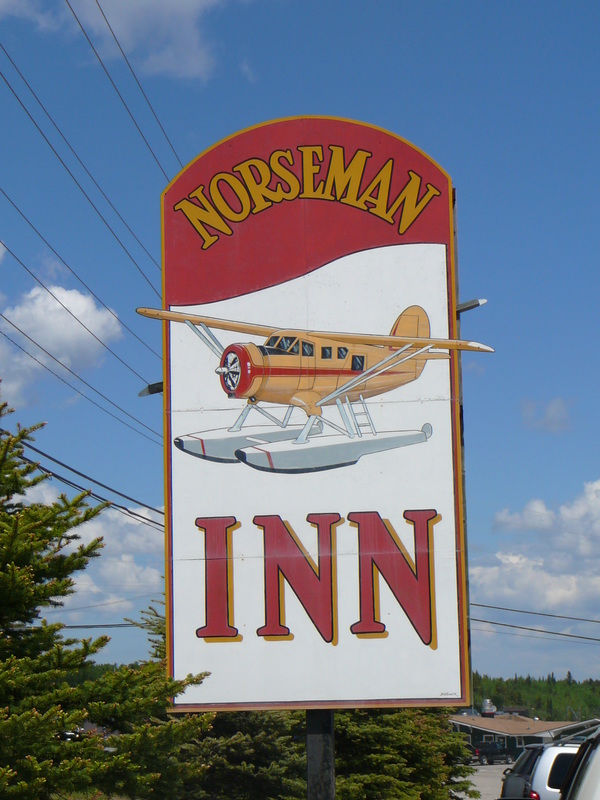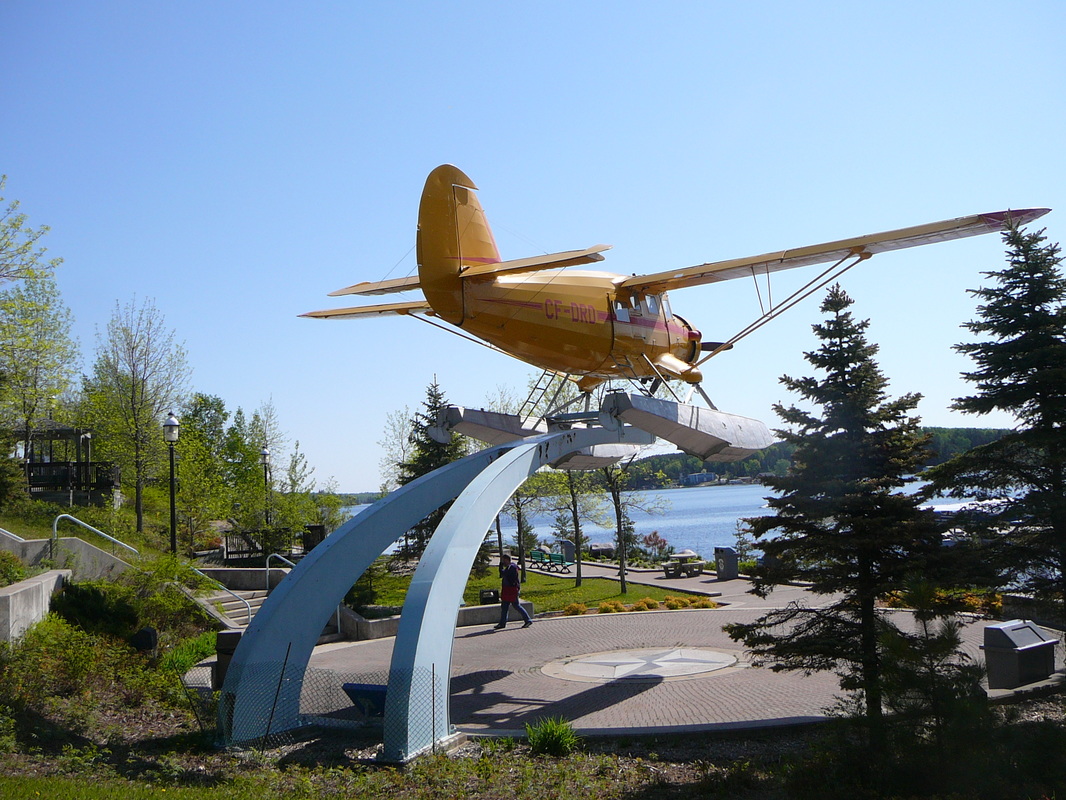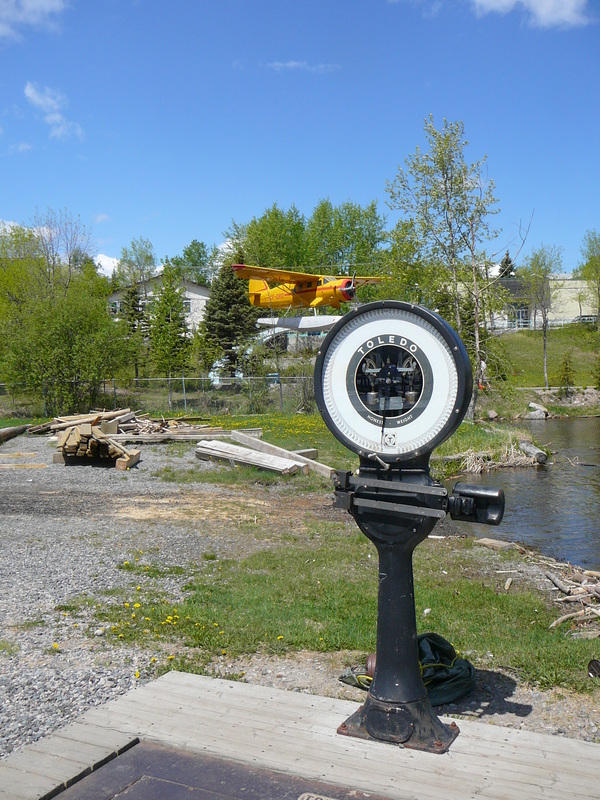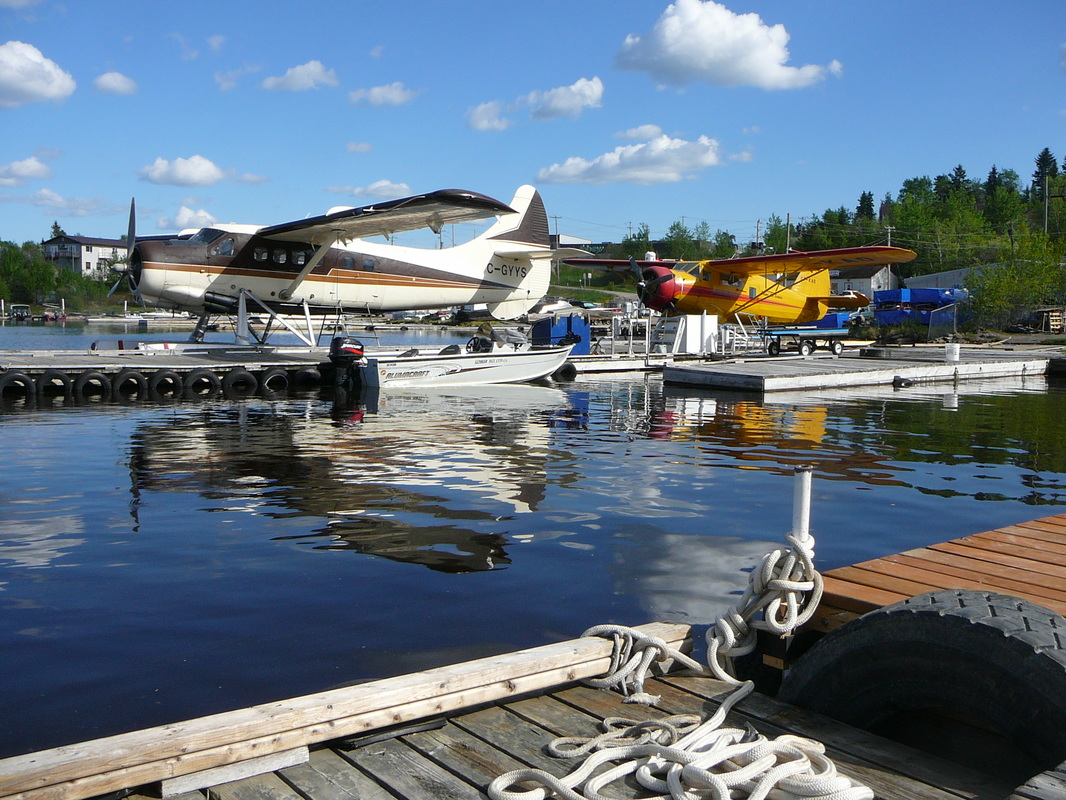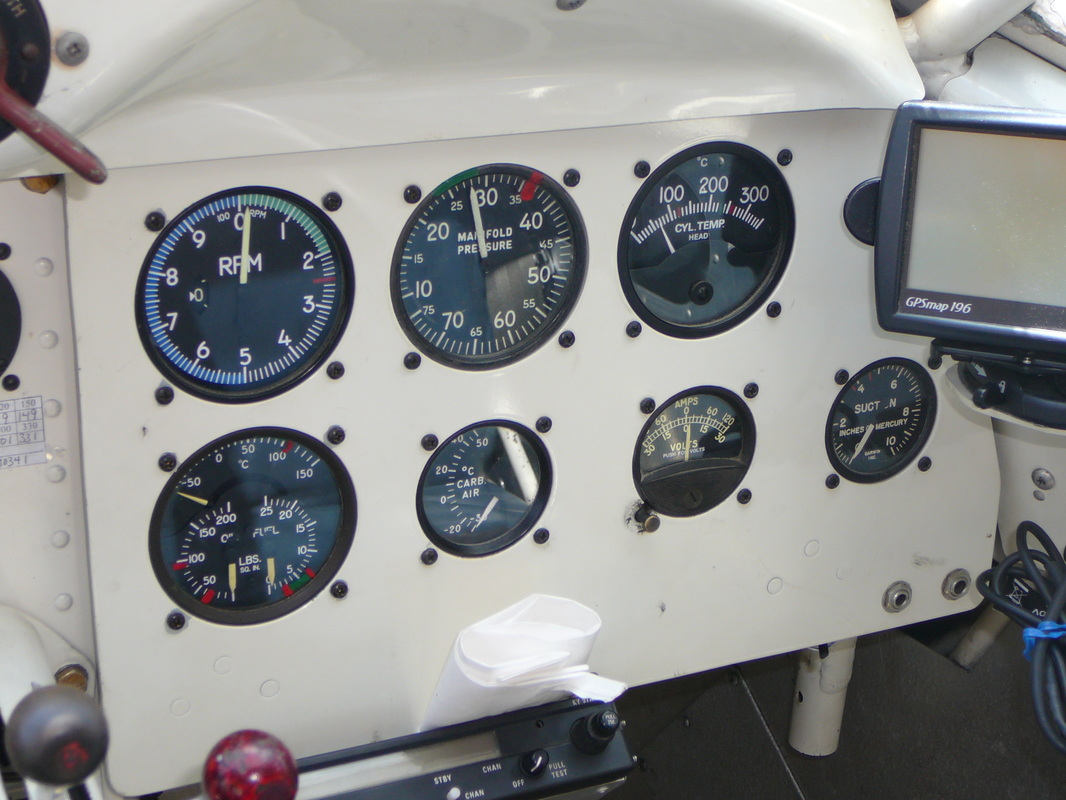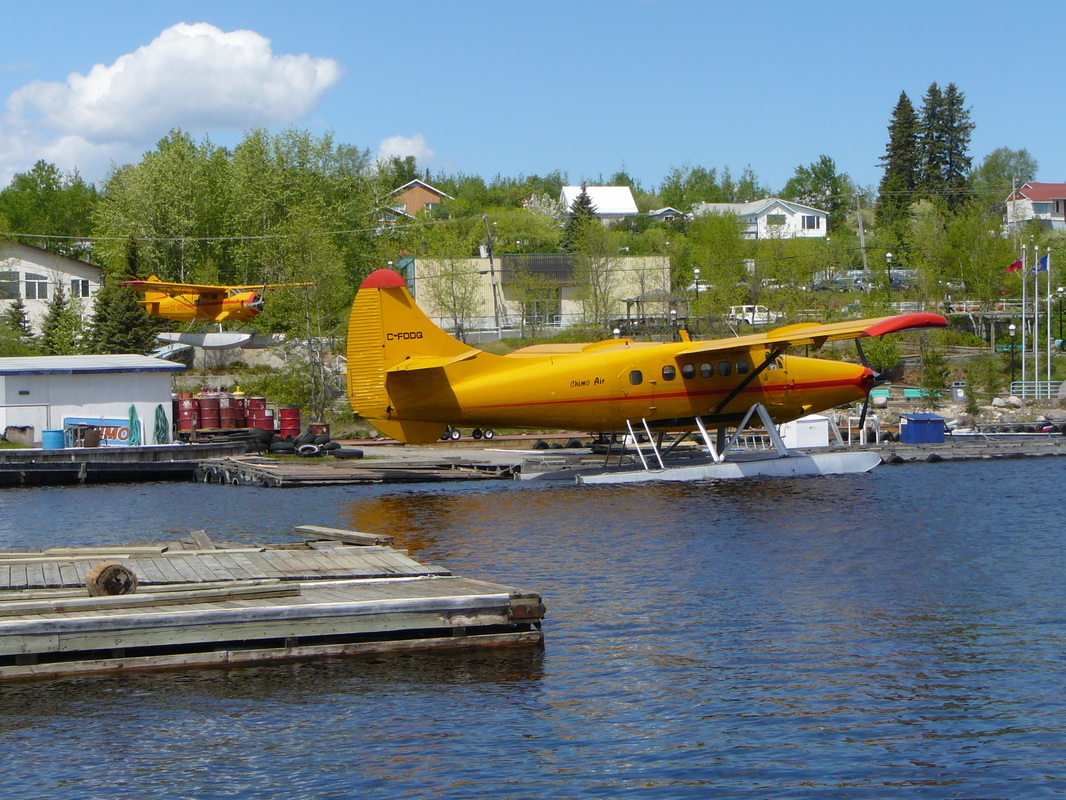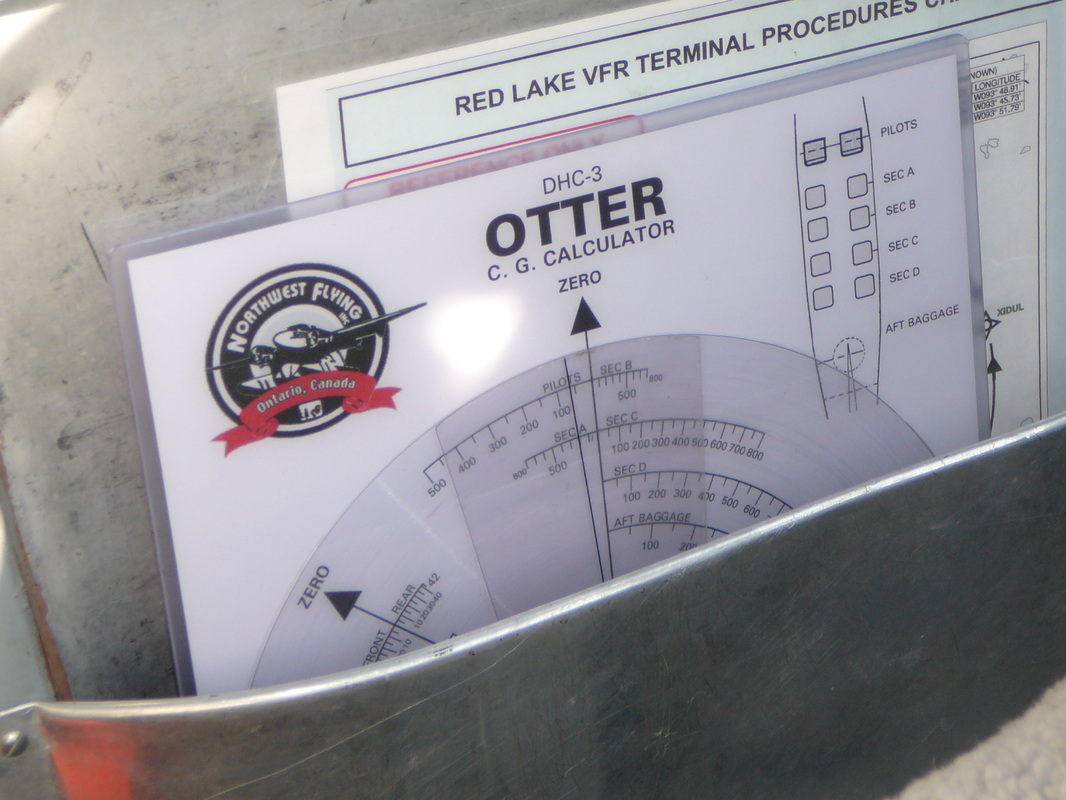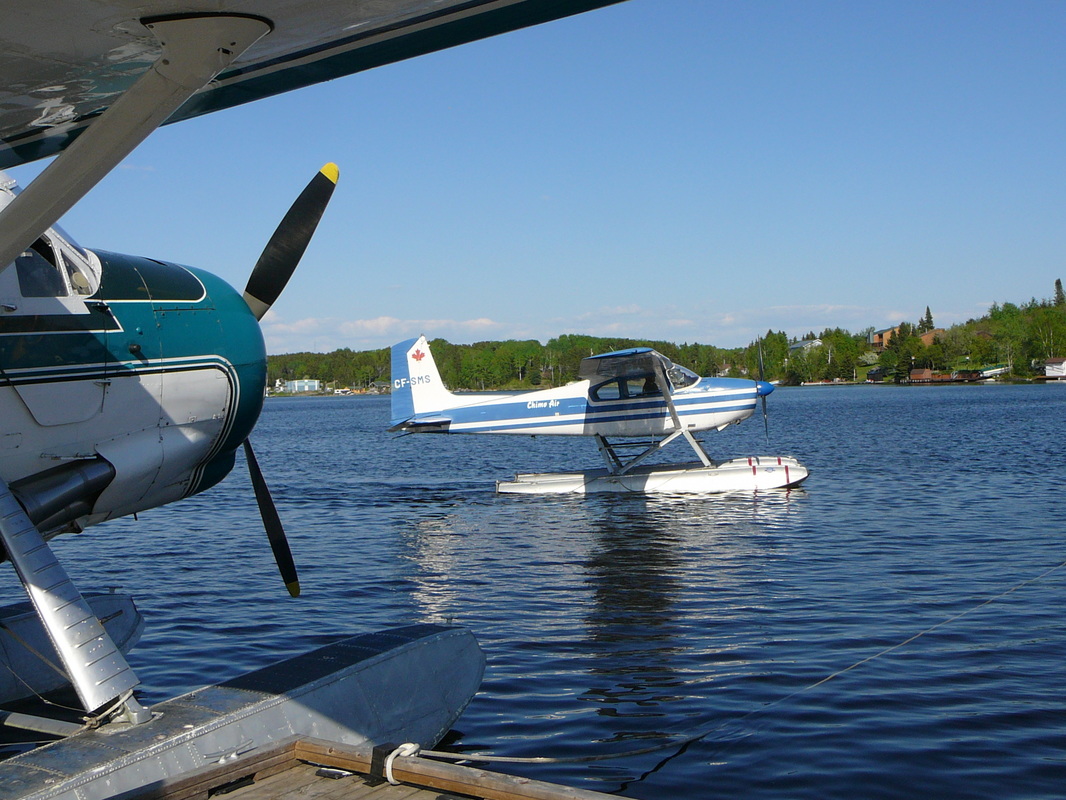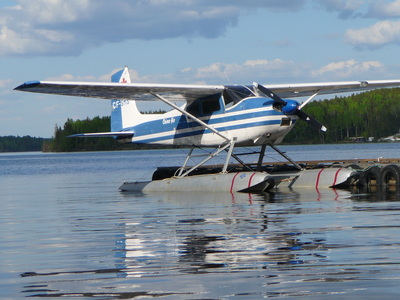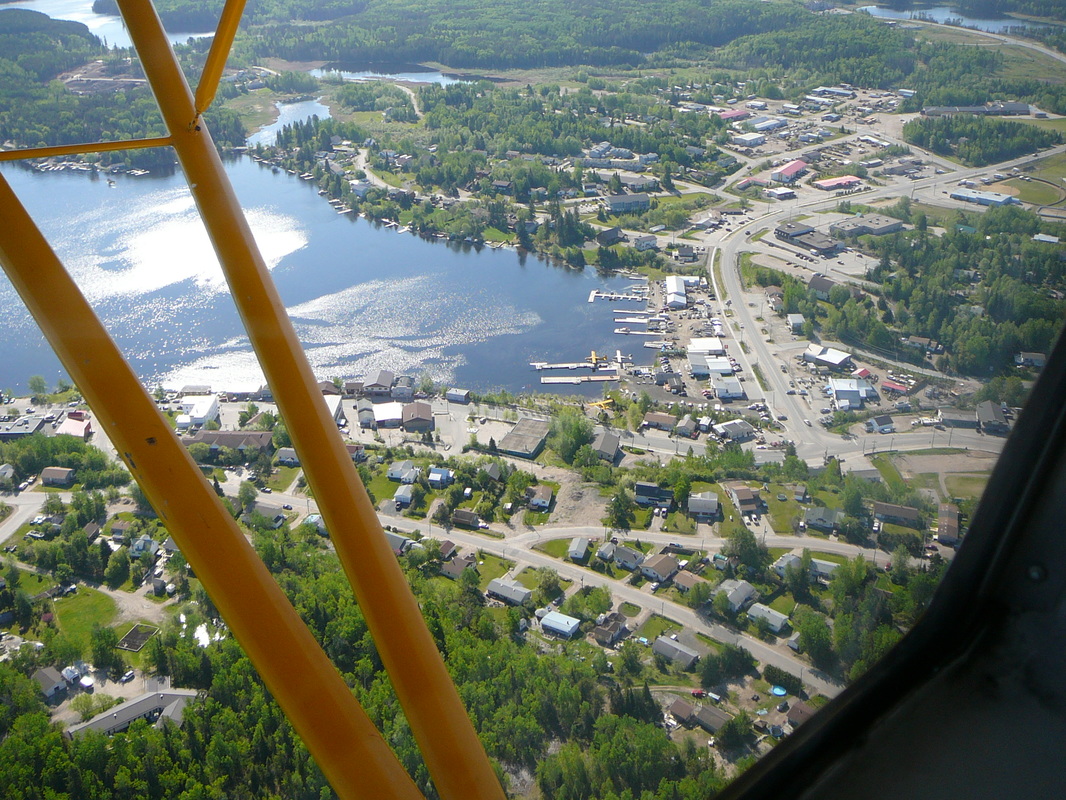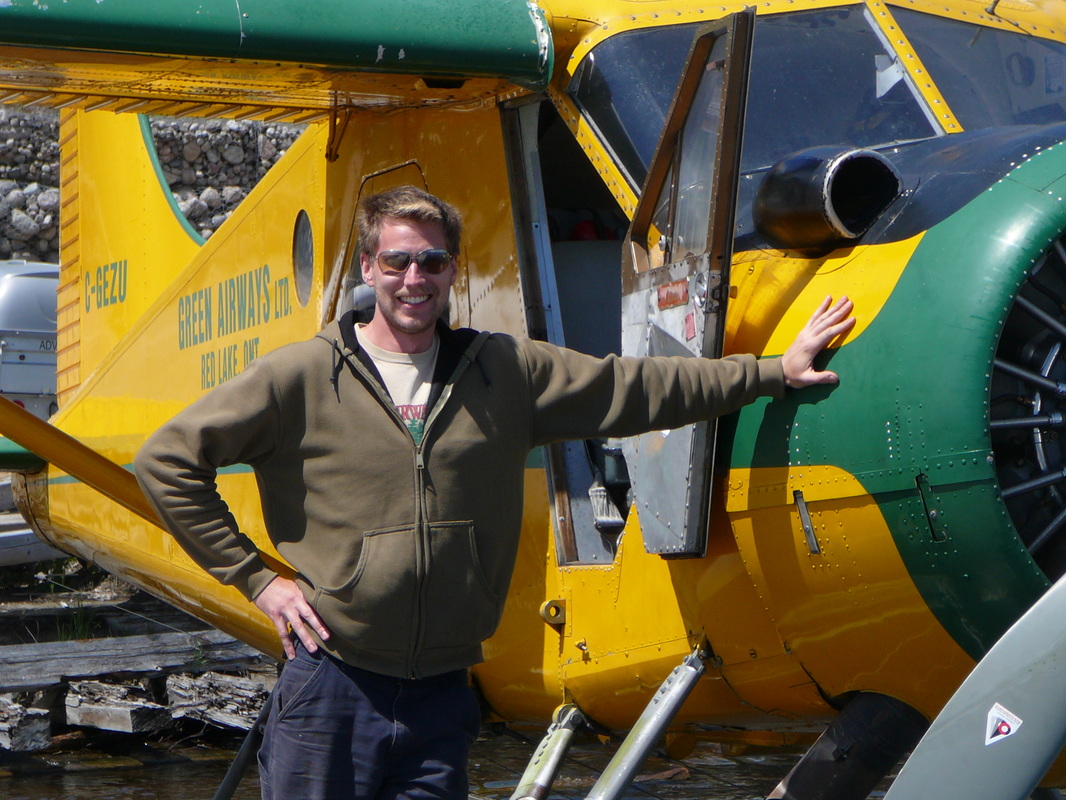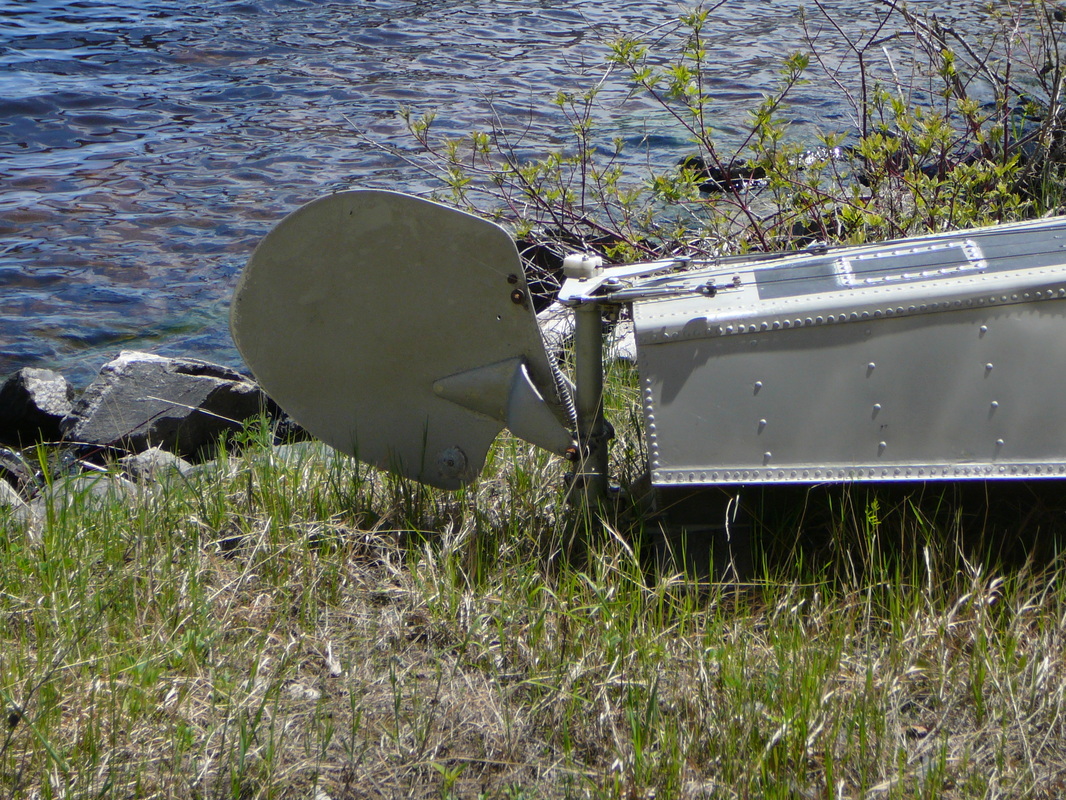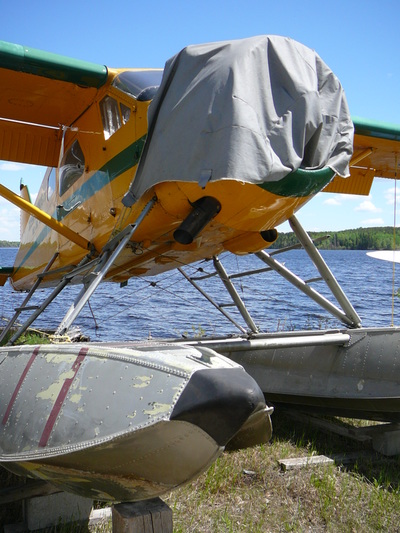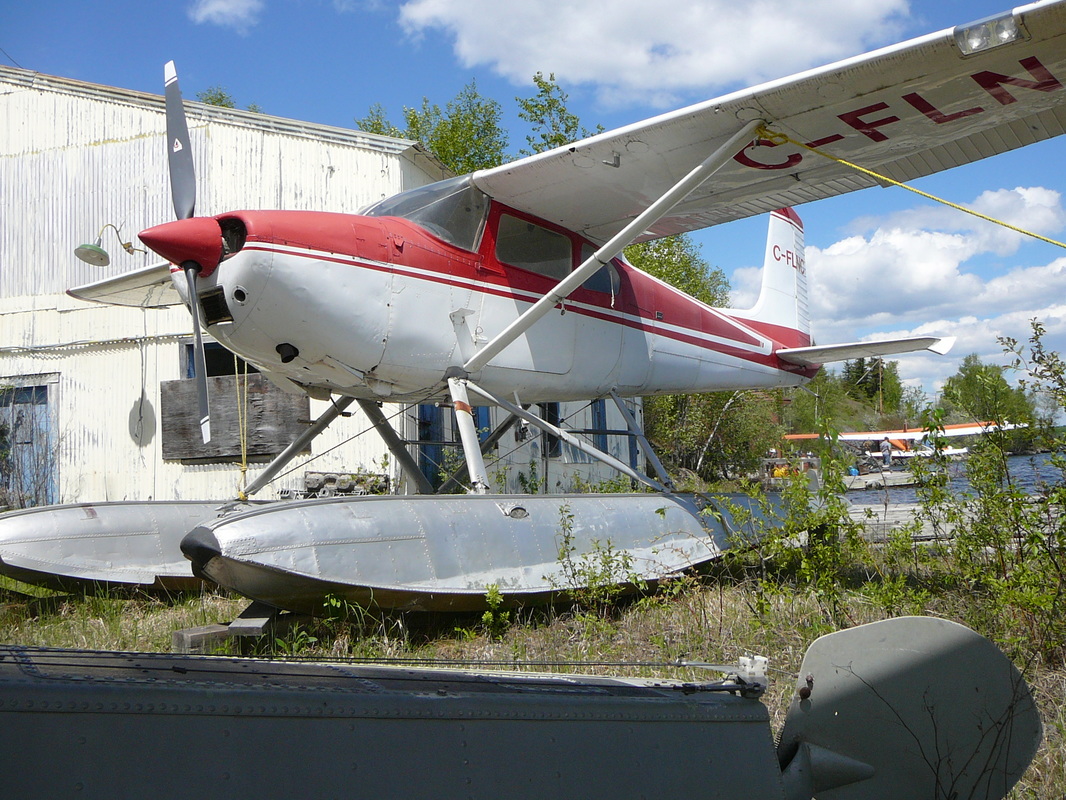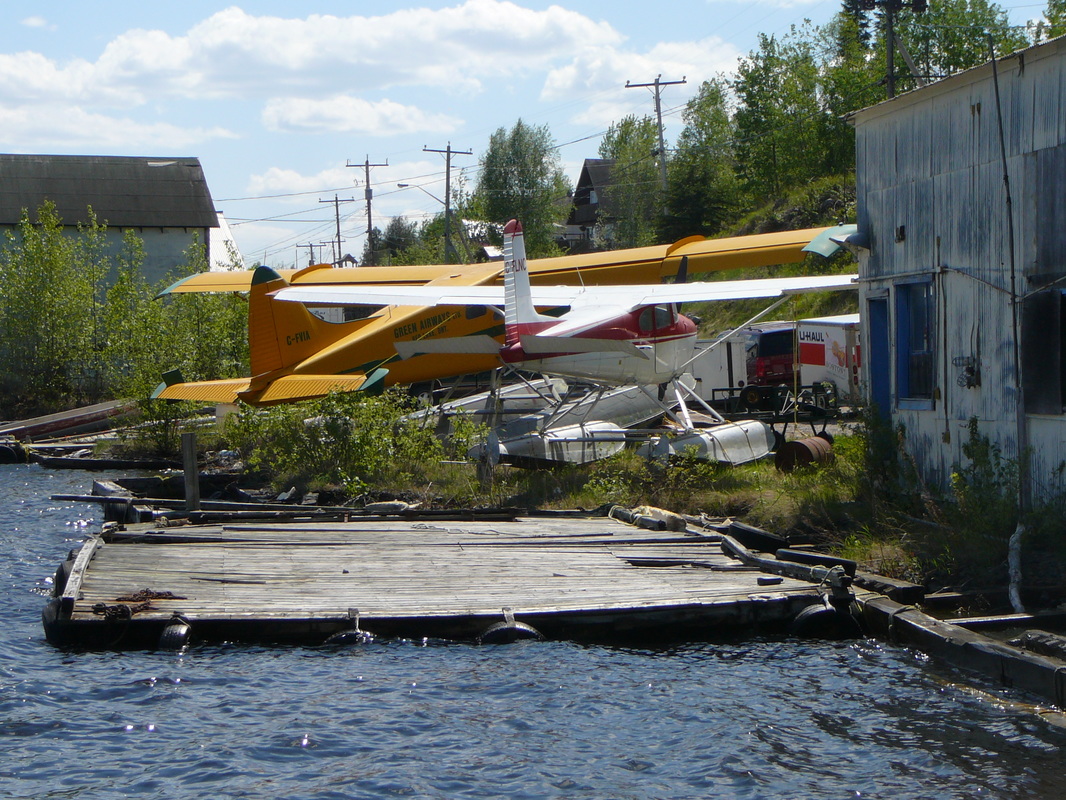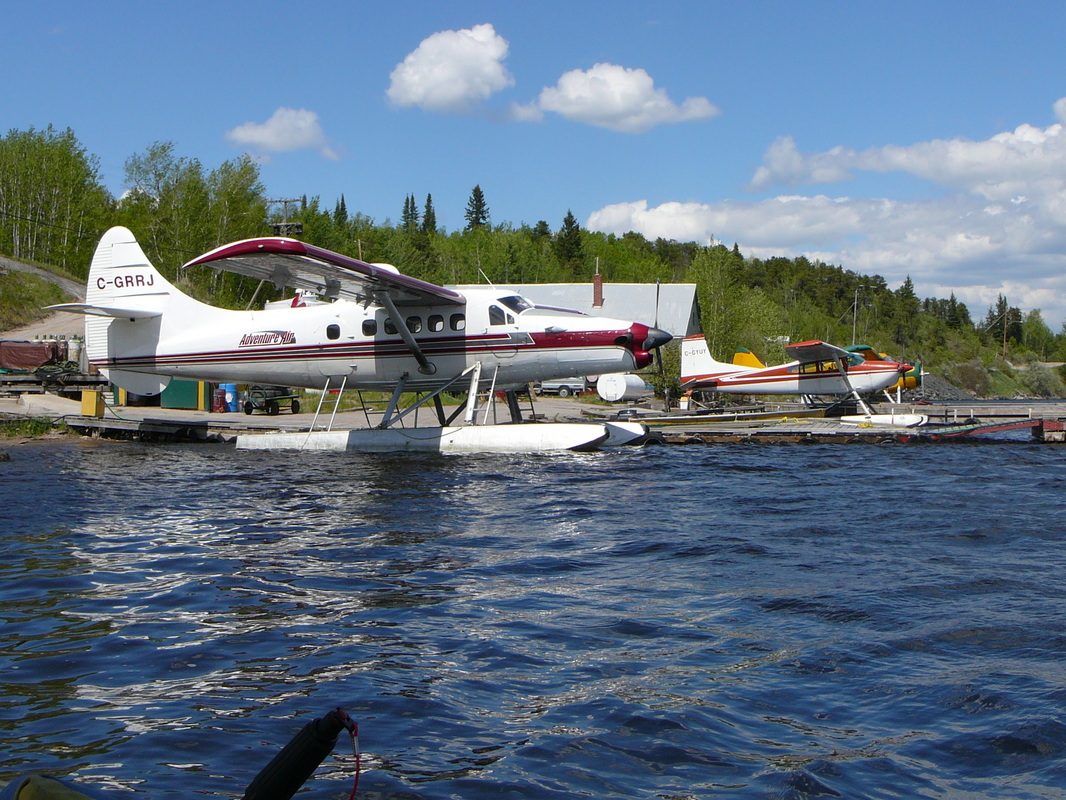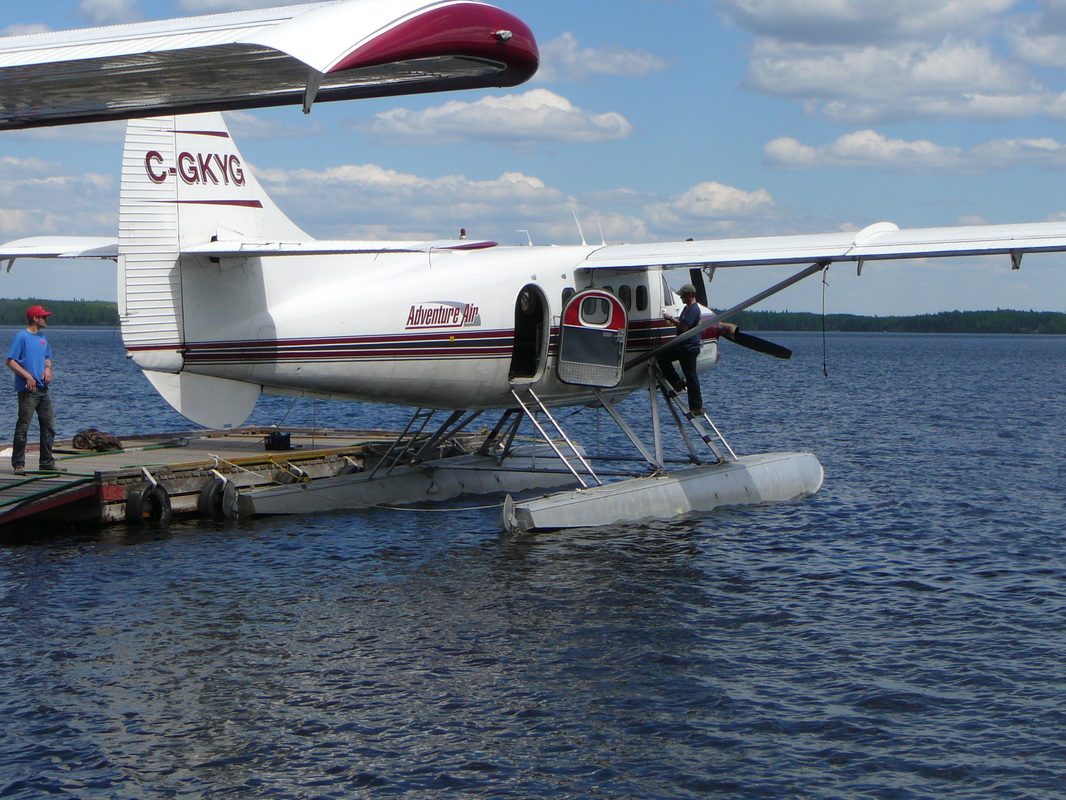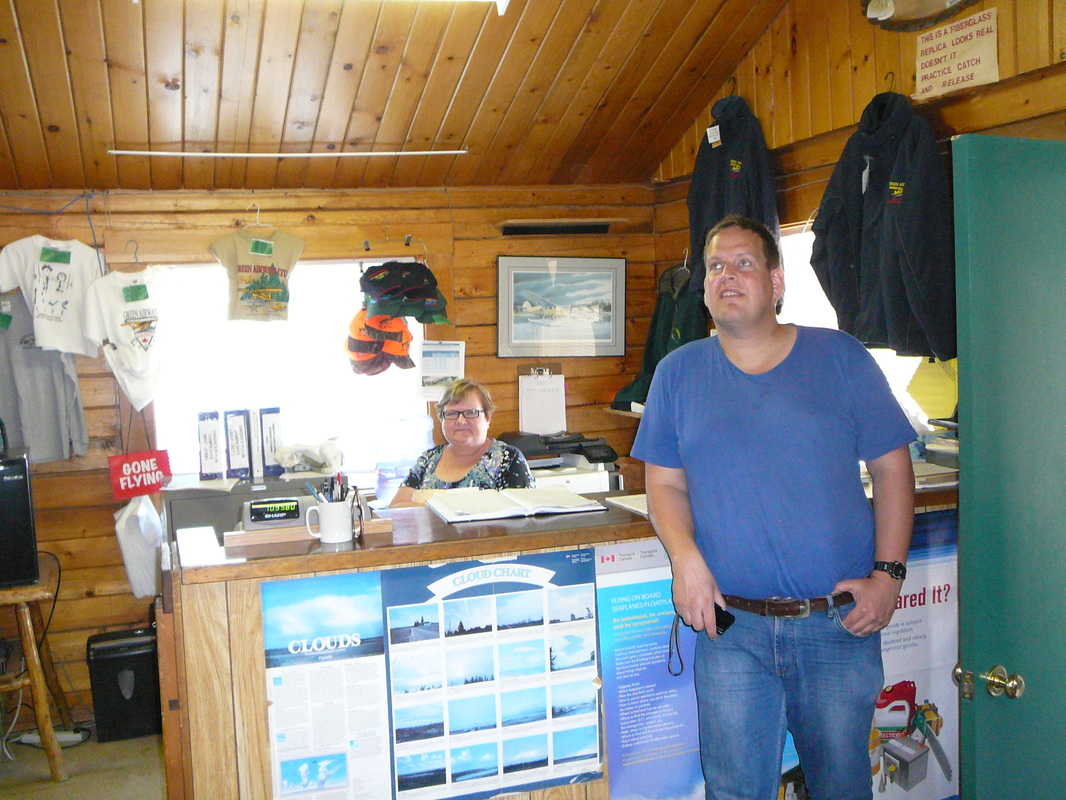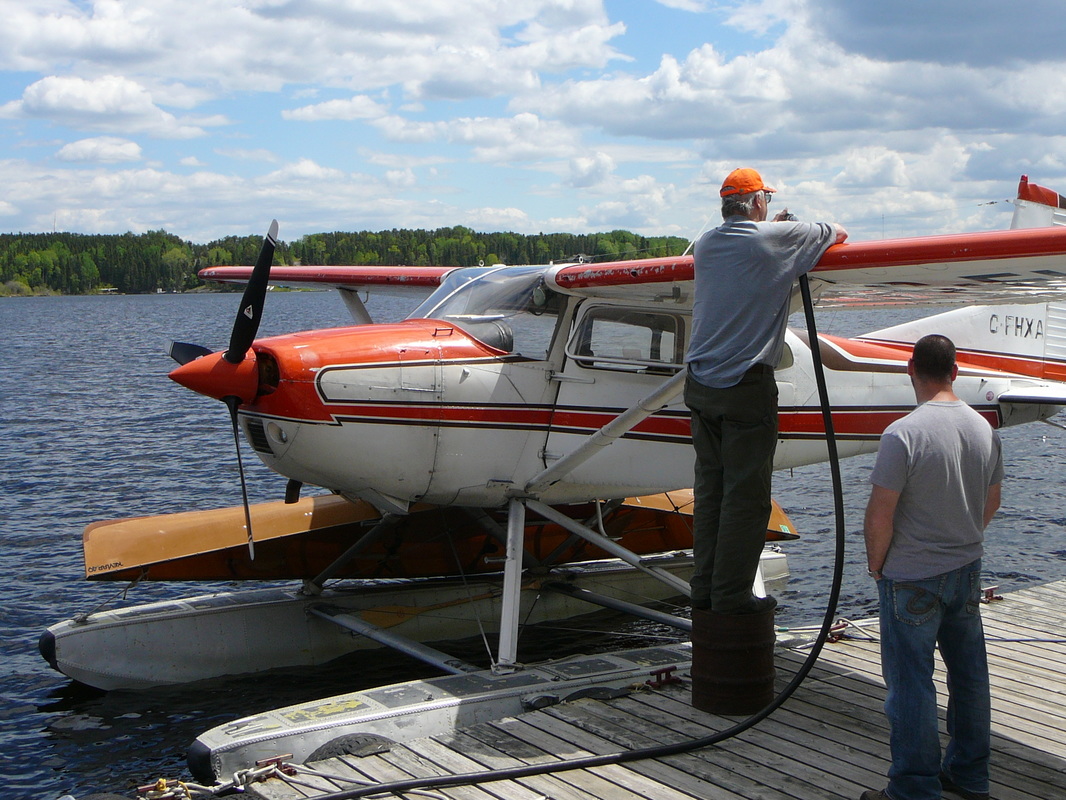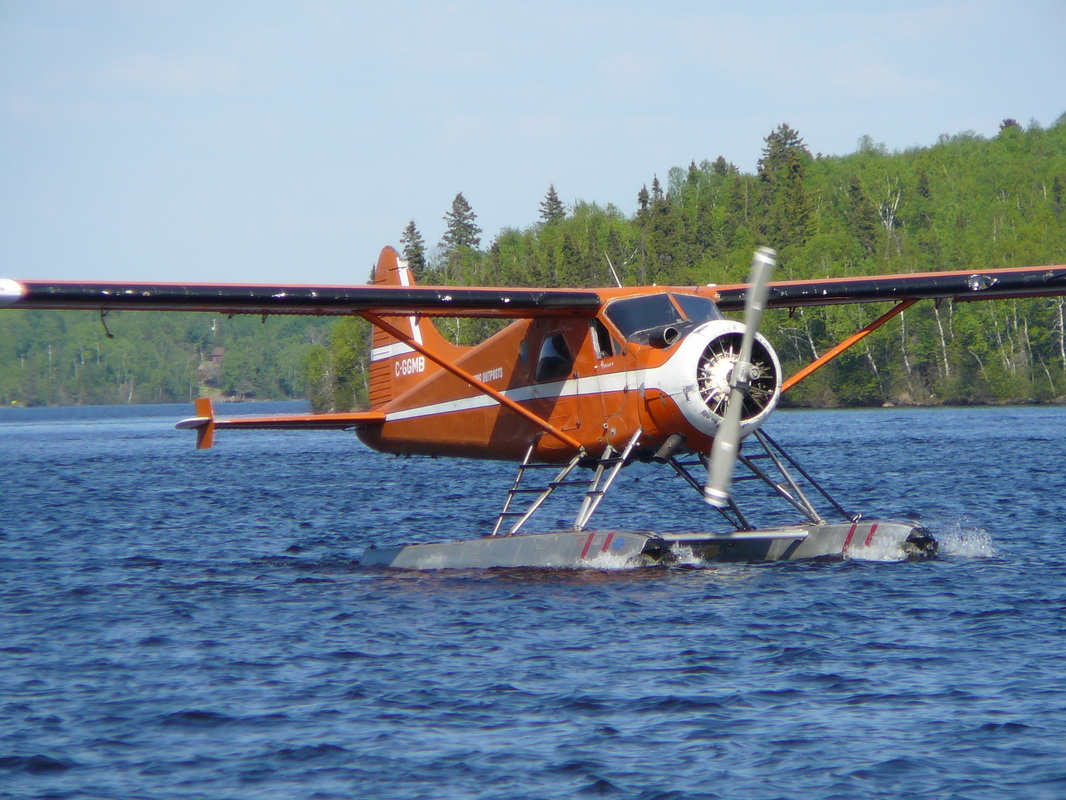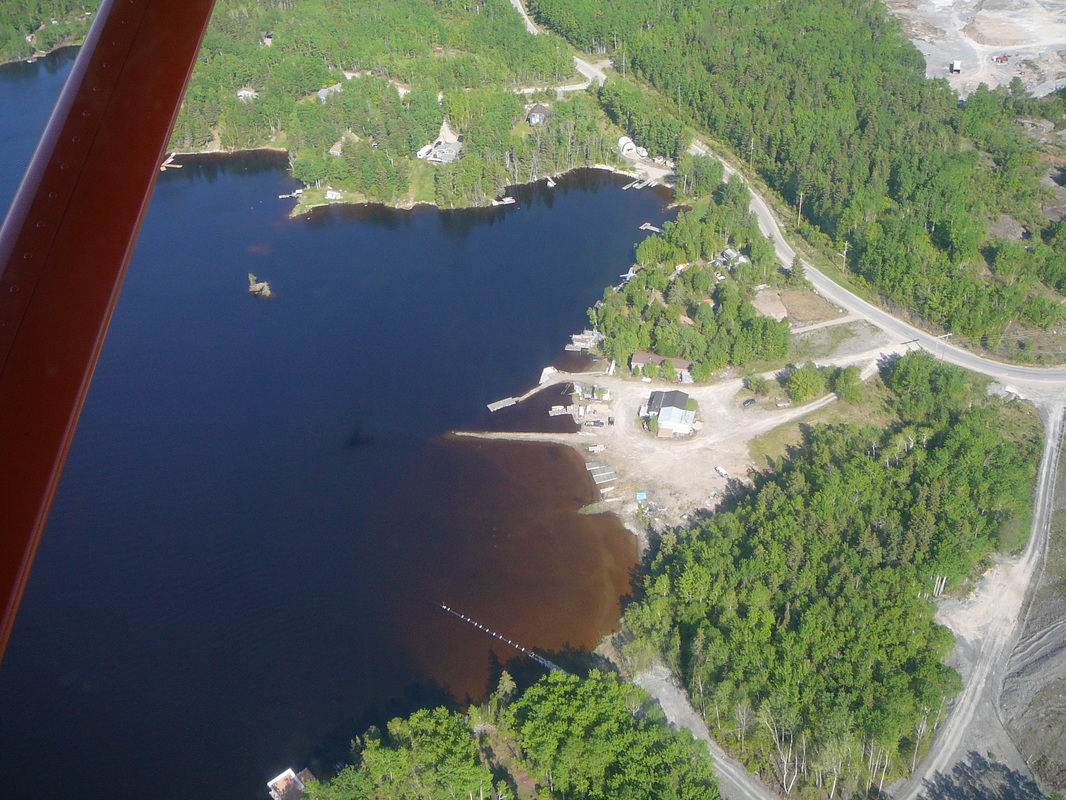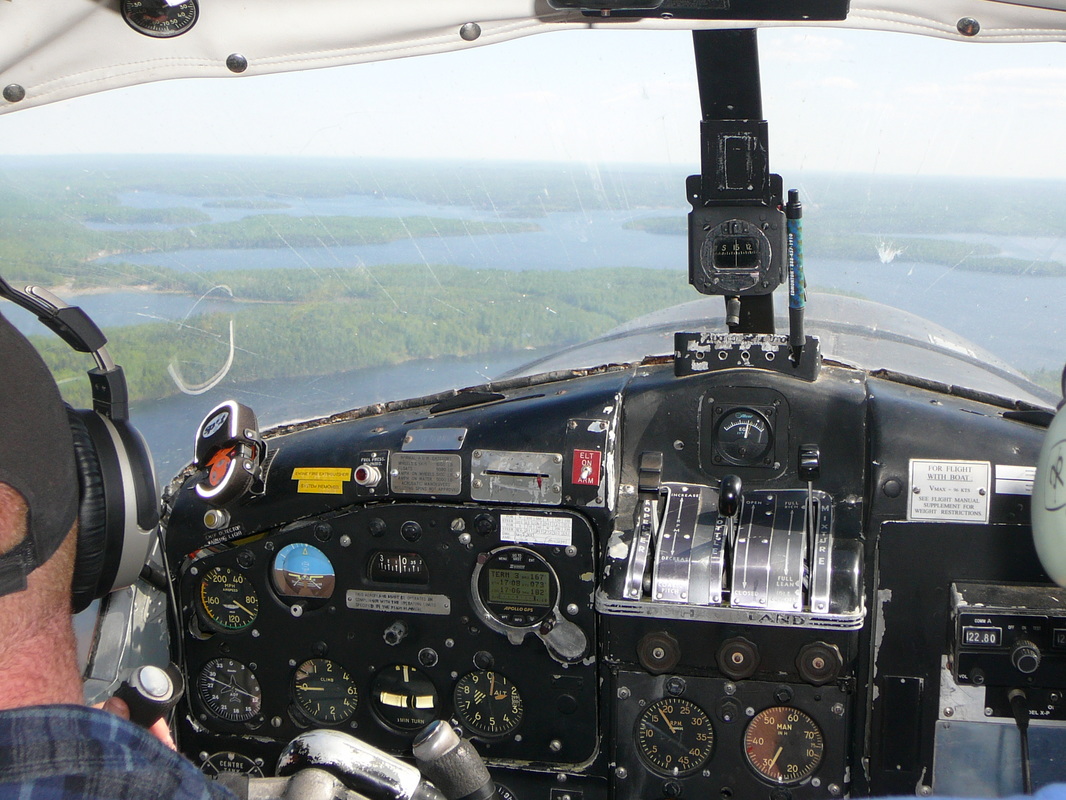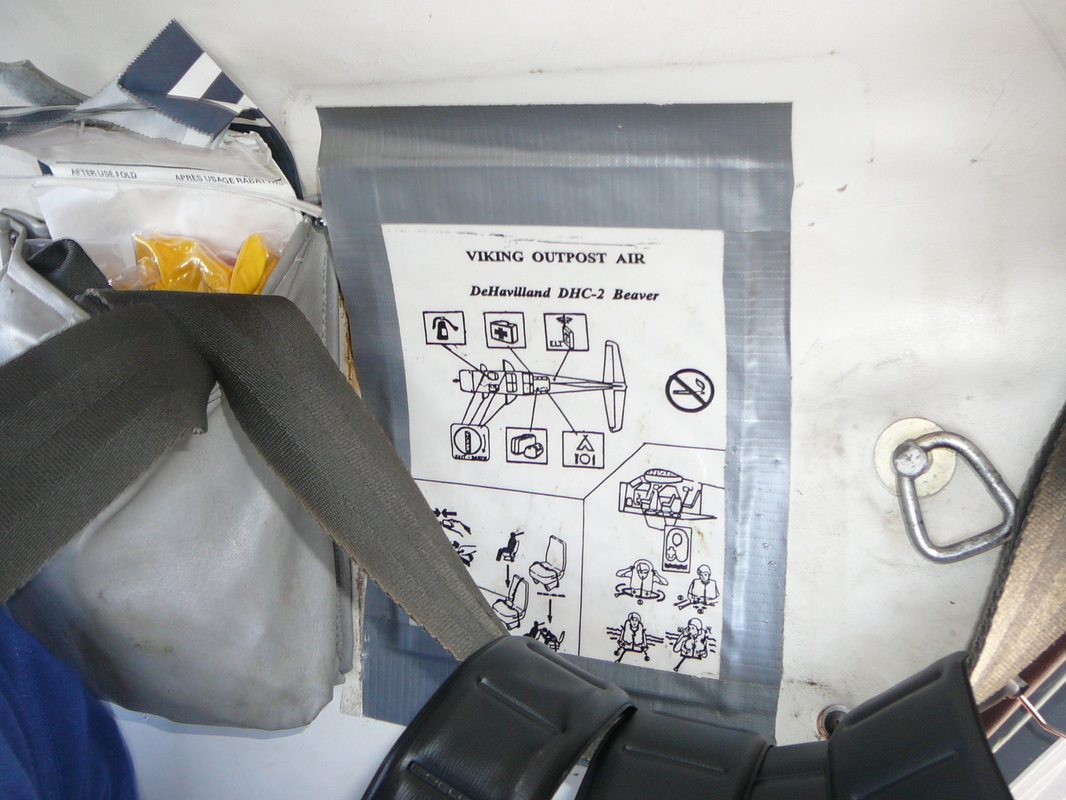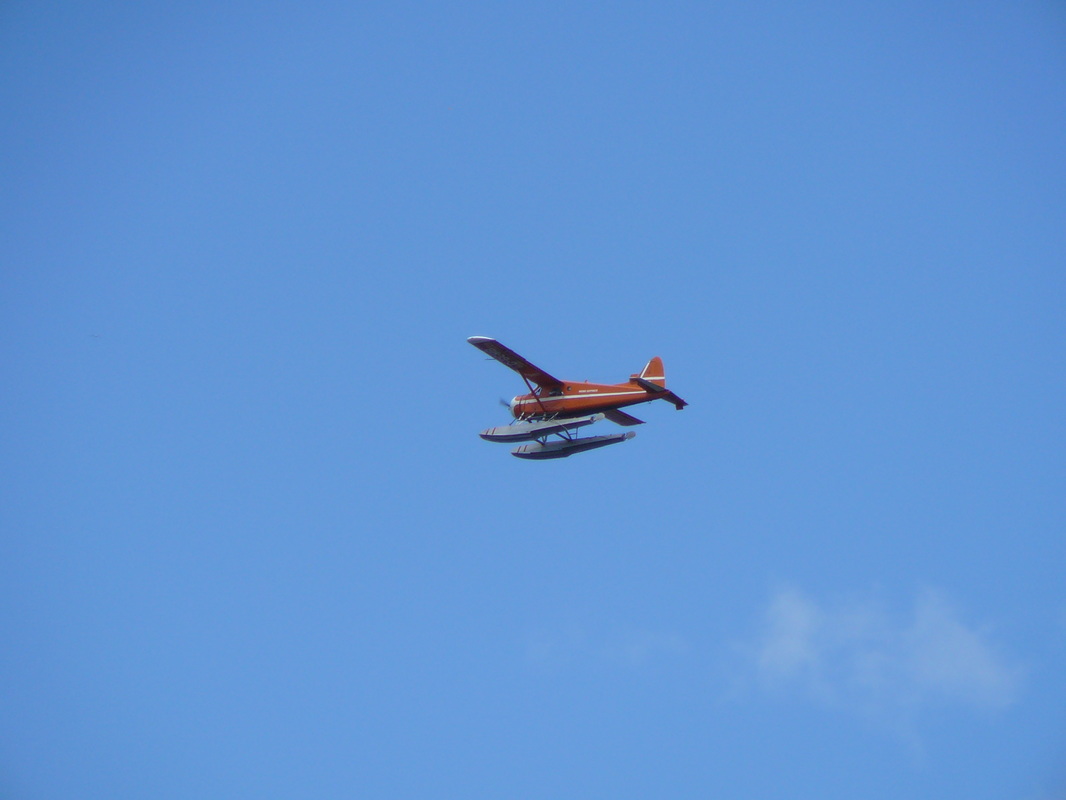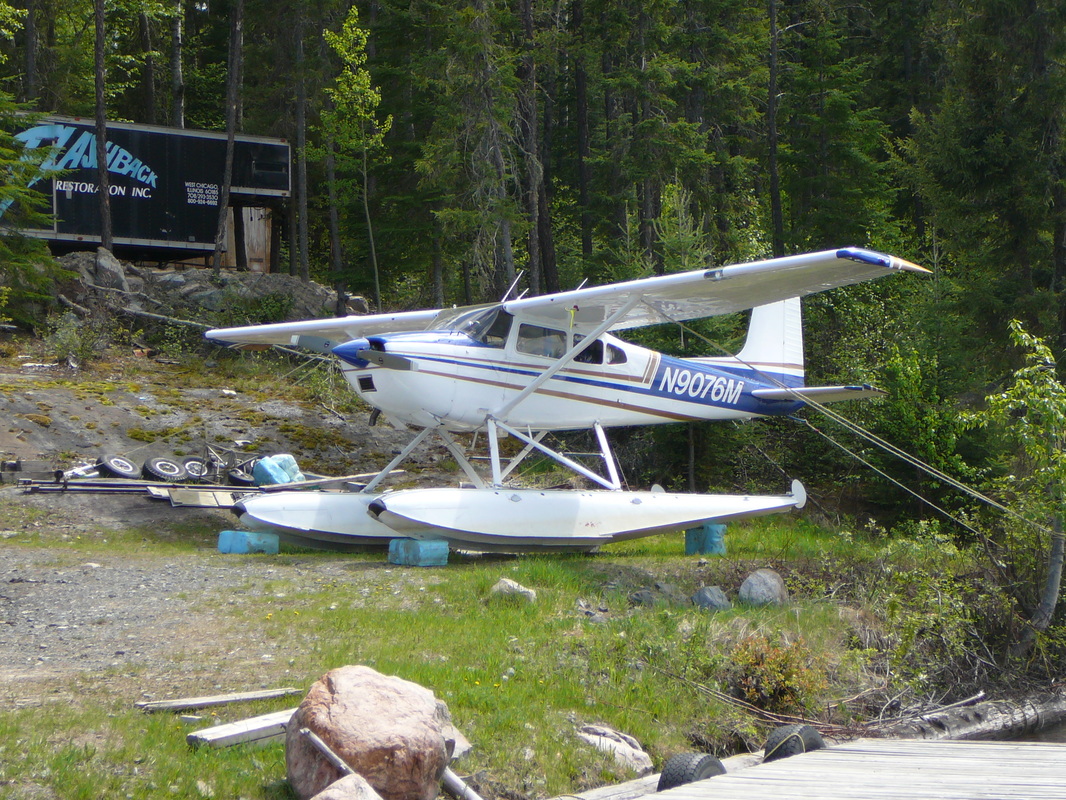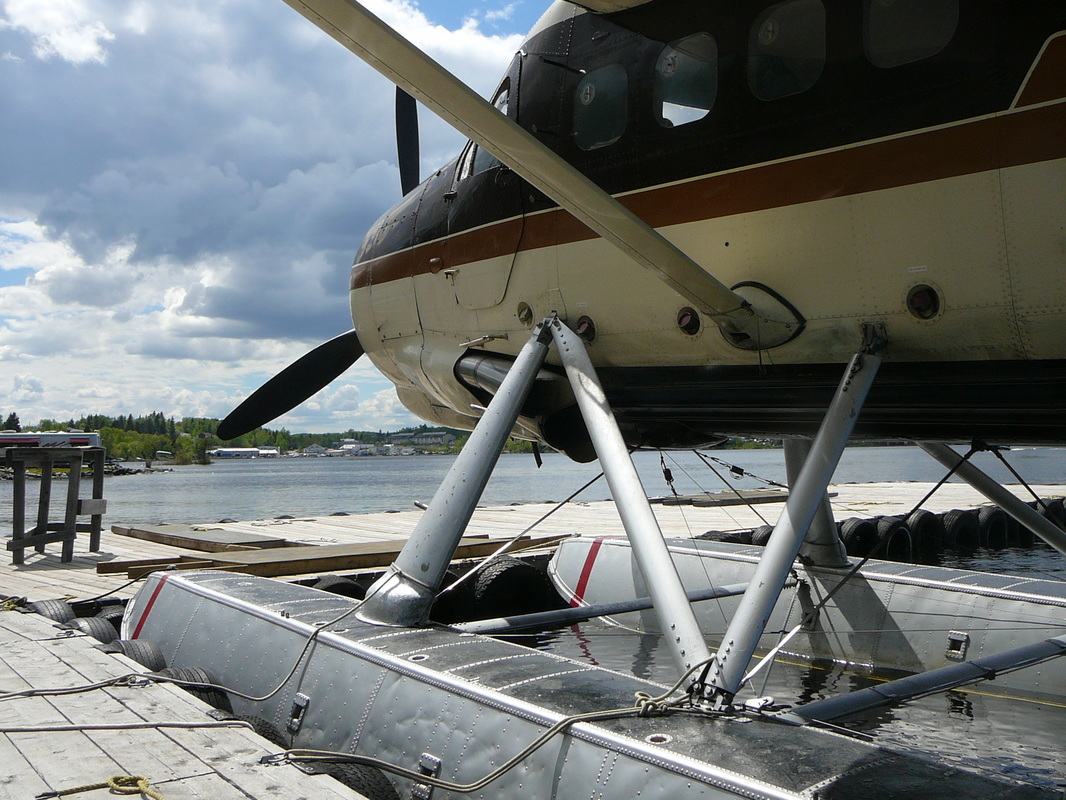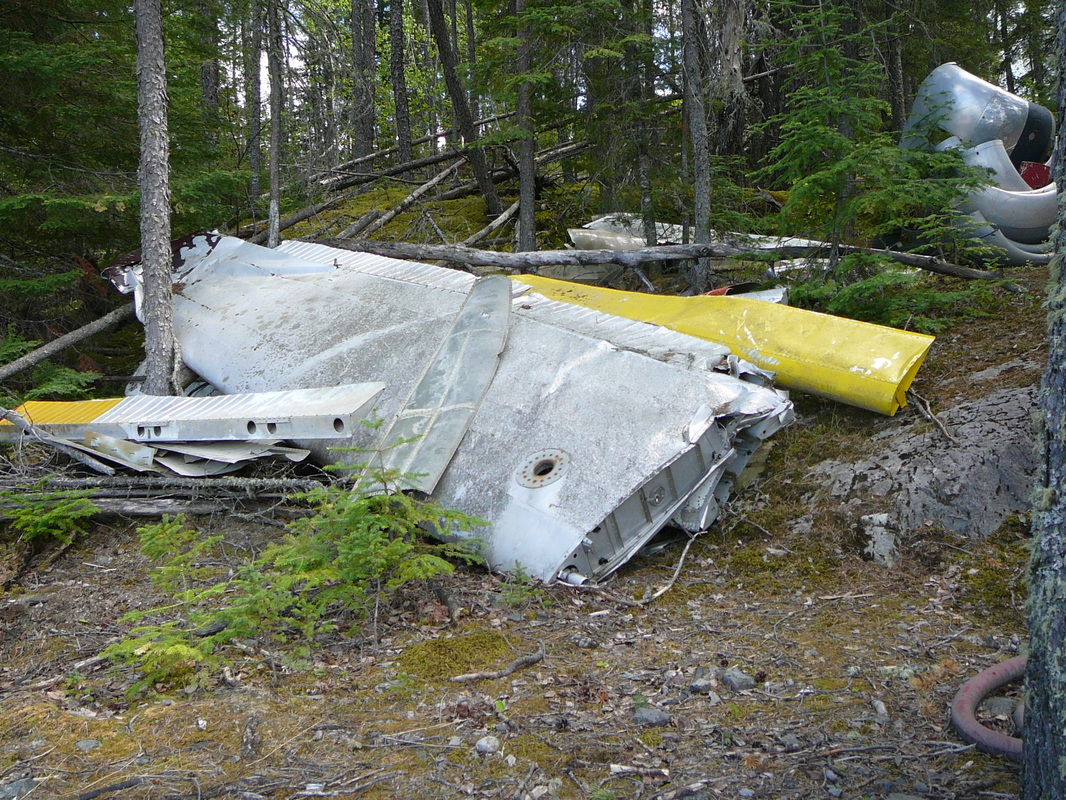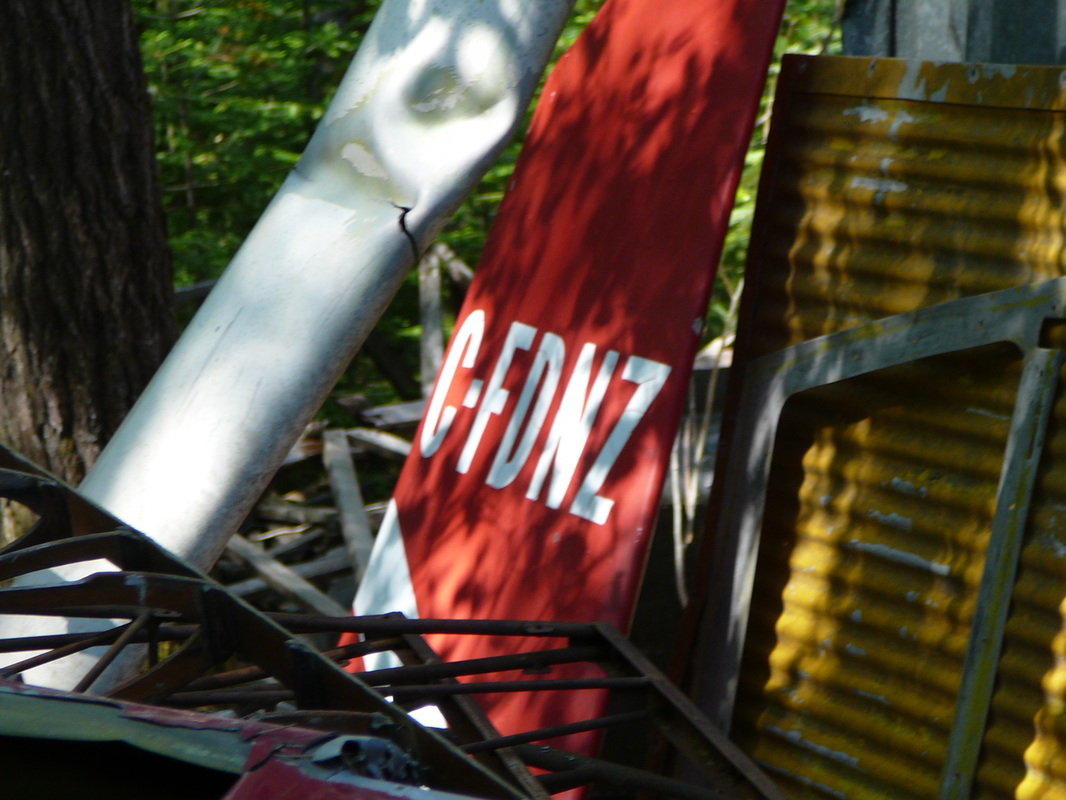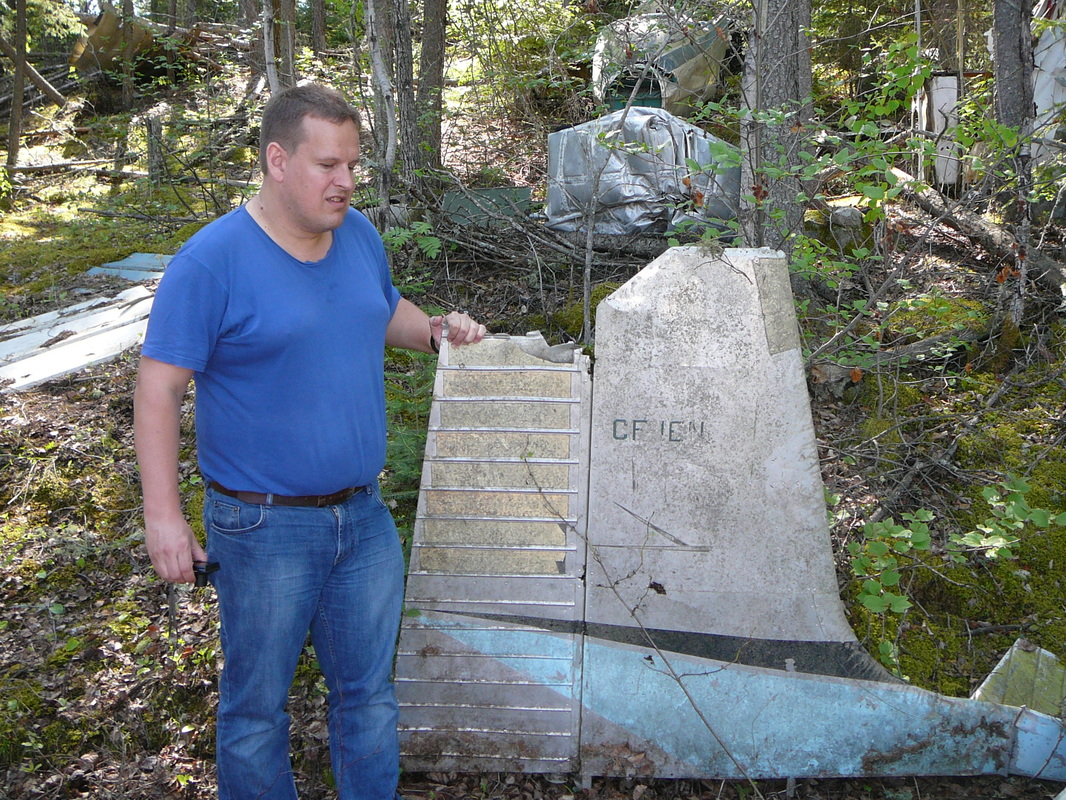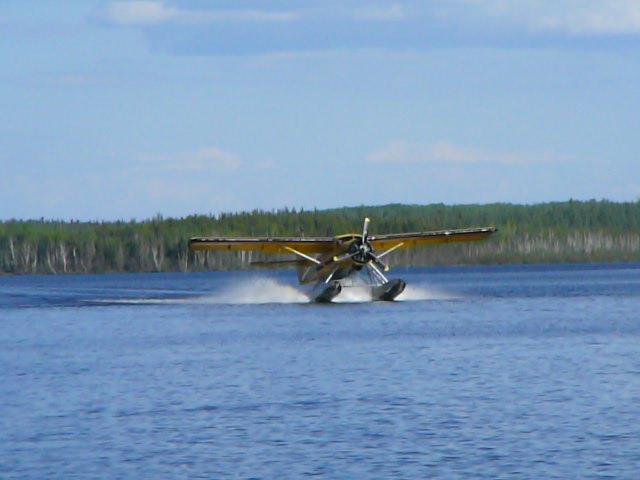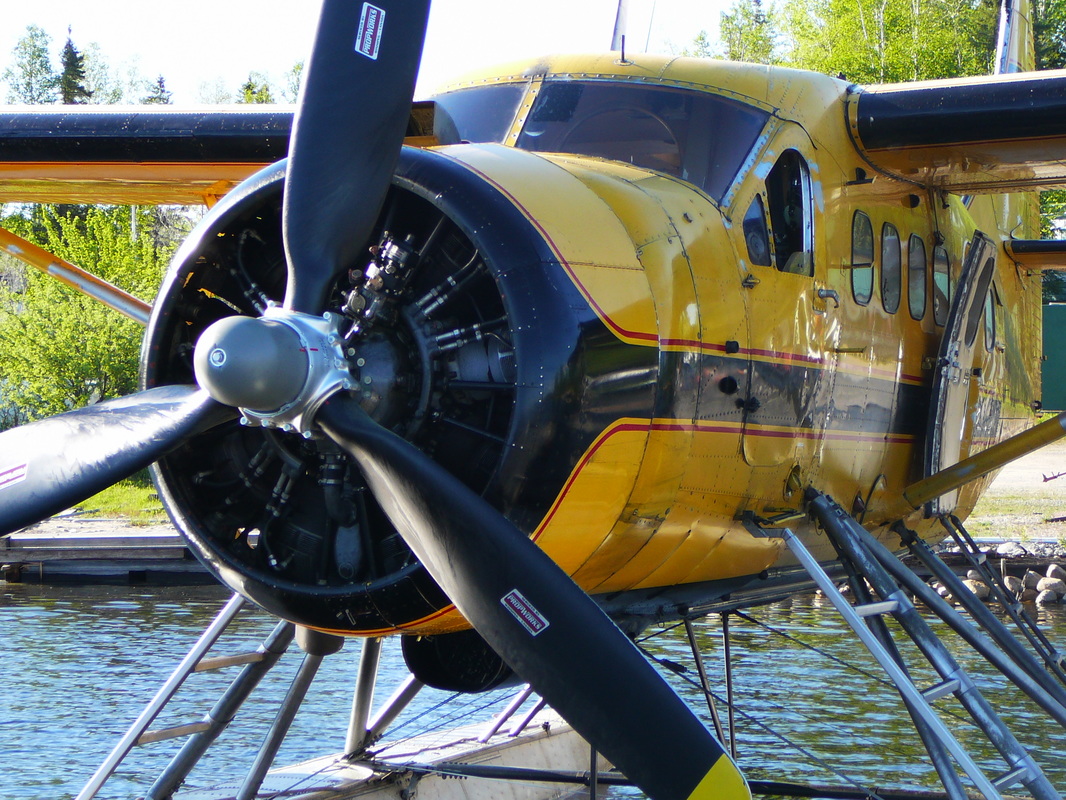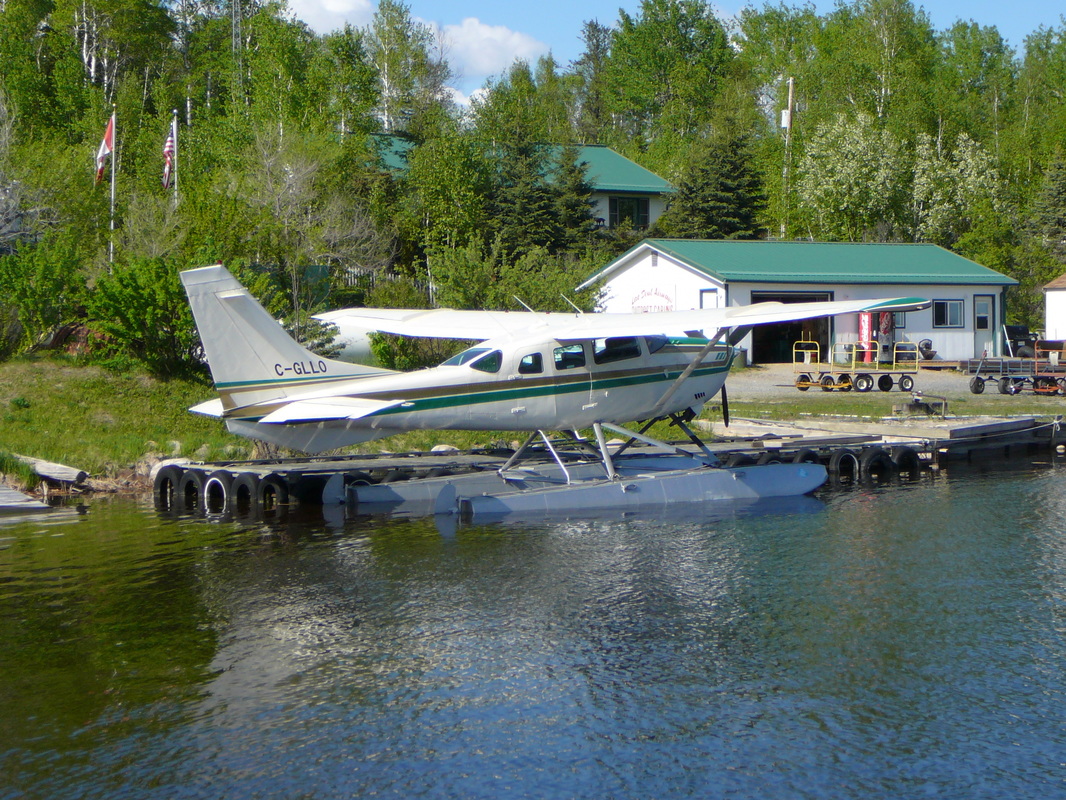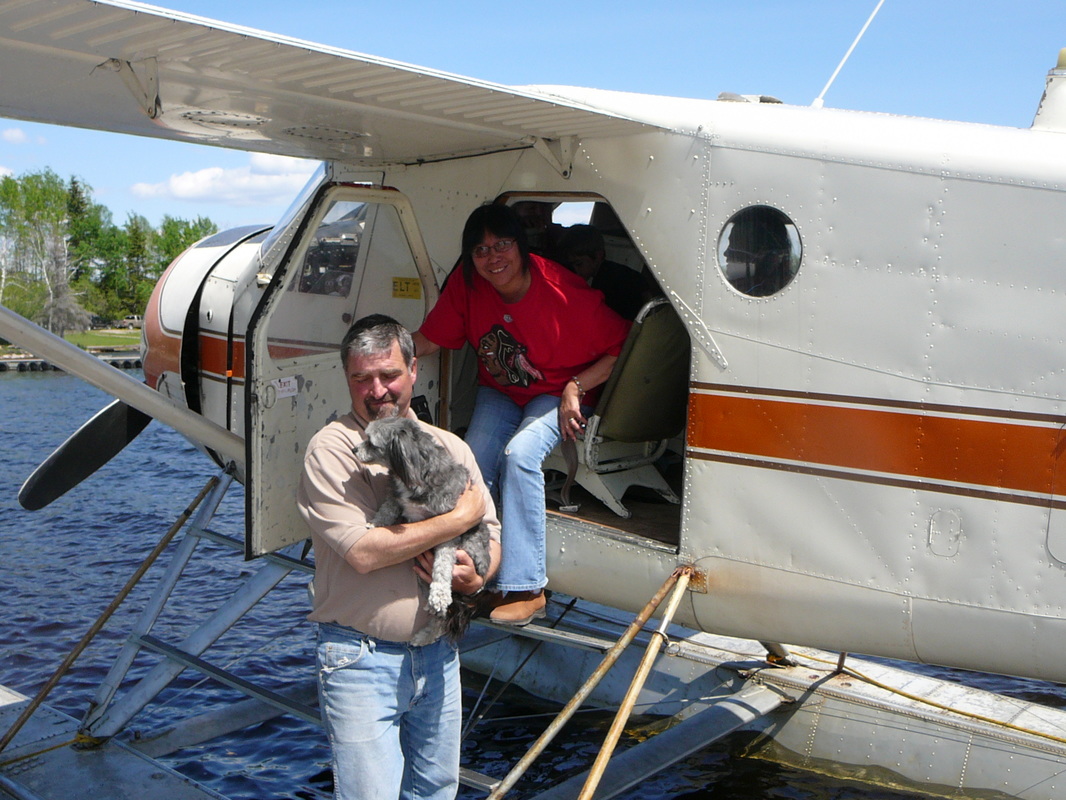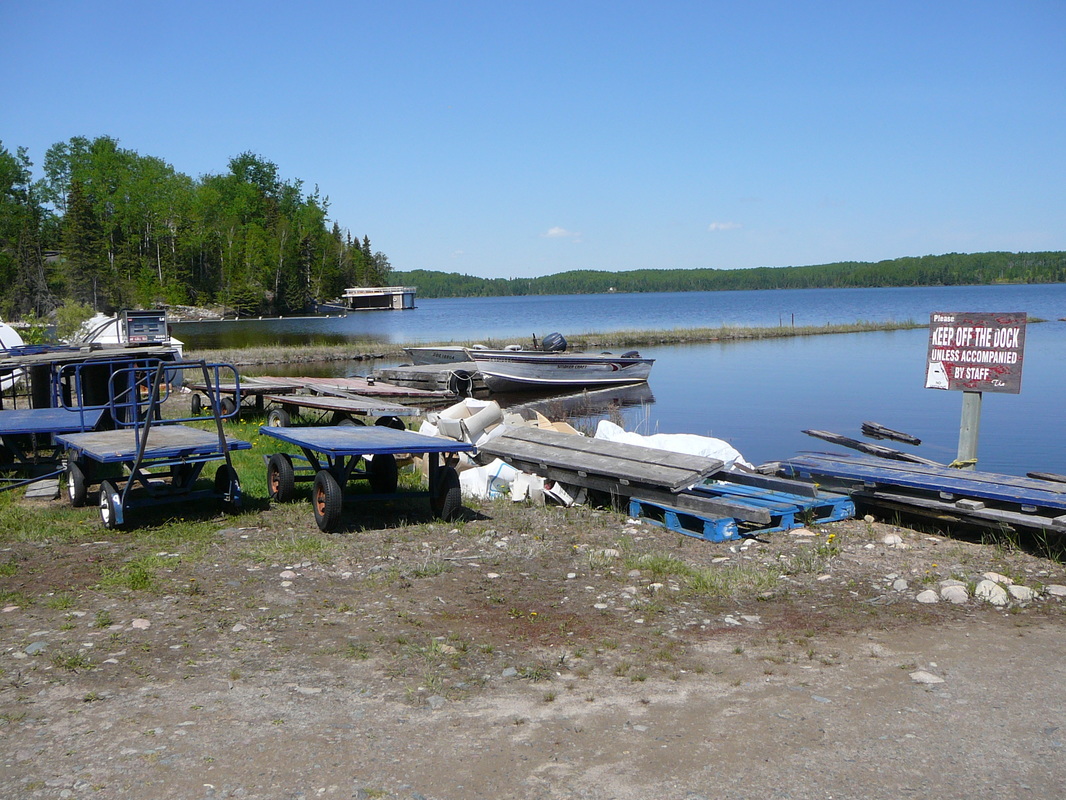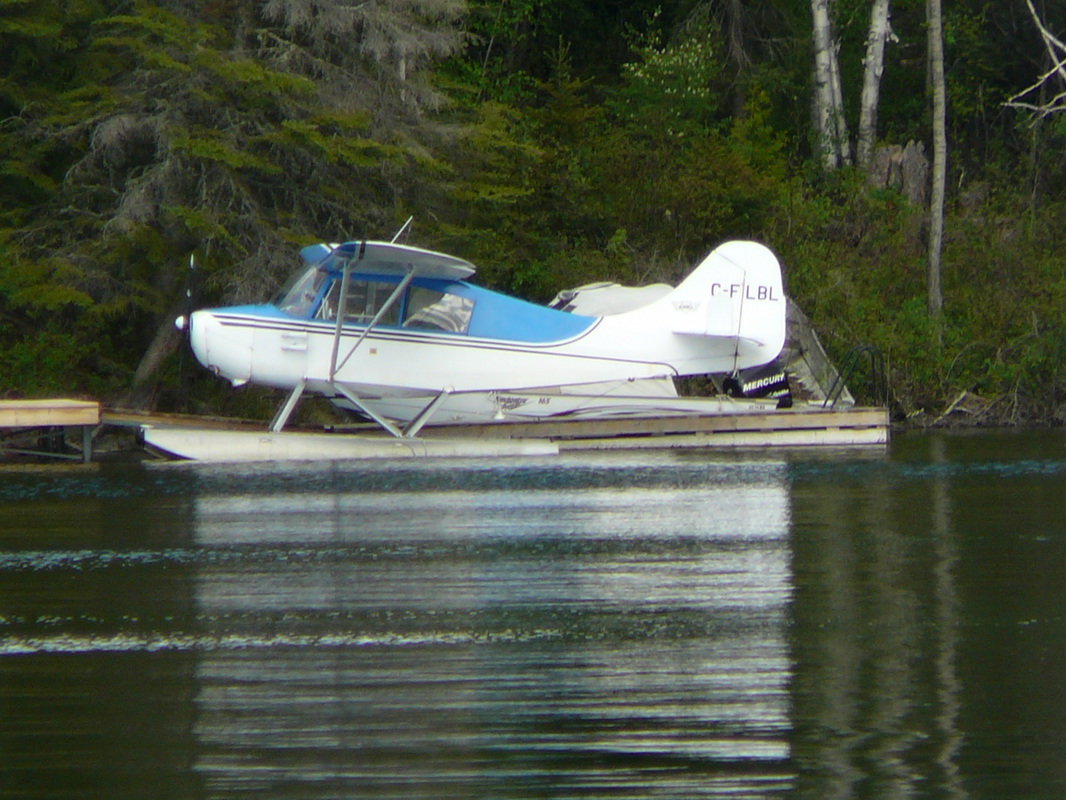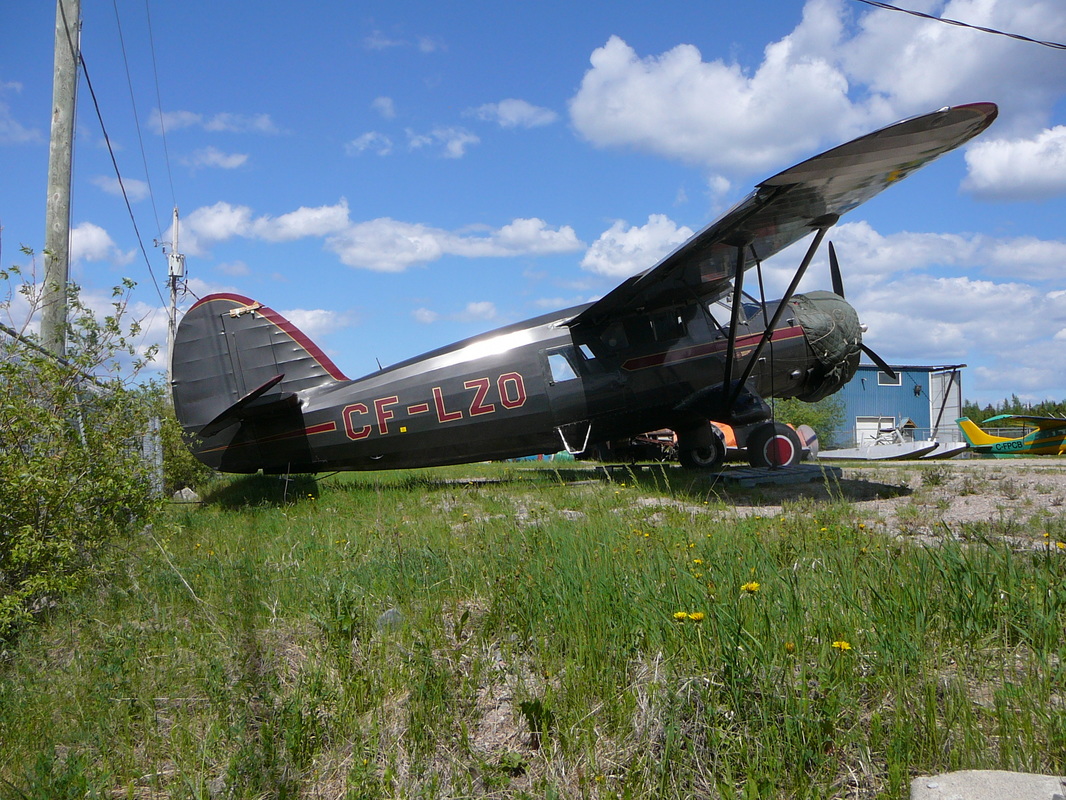Red Lake
|
Red Lake
-Norseman Capitol of the World- Red Lake sits at the end of highway 105 and is the biggest town for hundreds of miles around. Red Lake is a municipality with town status in the Canadianprovince of Ontario, 535 kilometers northwest of Thunder Bay and less than 100 kilometers the Manitoba border. The town is located east of Woodland Caribou Provincial Park, home to large herds of woodland caribou. The town experienced a sudden surge of economic, industrial and population growth with the discovery of gold in 1926. Commercial air service to the area began in 1926 using the waters of Howey Bay on Red Lake as a float plane base. Due to the freight requirements of the gold mines developing in the area, Howey Bay was recognized as the busiest airport in the world during 1936 and 1937. The mine, presently owned by Goldcorp, is still one of the richest gold mines in the world. The town advertises herself as follows; - “Visit Red Lake and experience the best in Northern lifestyle - past and present”. Red Lake consists of six smaller towns located in the heart of a lake-studded, boreal forest region in Sunset Country. Most people still visit Red Lake for its natural beauty, to see the abundant wildlife, and to experience incredible Canadian fishing in the many freshwater lakes in the area. Red Lake is home to many fishing and hunting lodges and is a starting point to many of the fly-in lodges and outposts in the far north. Red Lake is also the starting point for wilderness canoe excursions into Woodland Caribou Provincial Park. History can be experienced first hand at the Red Lake Museum now housed in the new Red Lake Regional Heritage Center. You'll find First Nation and gold mining displays as well as outdoor exhibits. You can watch movies of the area's rich past, buy books and souvenirs and find out about other attractions in the district”. The town has adopted the title of "Norseman Capital of the World" and the annual Noorduyn Norseman Festival celebrates this historic bush plane and its role in the development of the area. Visit Norseman Heritage Park and see a full size model of the Norseman. “The skies around Red Lake reverberate several times a day to the urgent, clattering growl of Pratt & Whitney R-985s and R-1340s at full power” The three main operators here: Chimo Air, Green Airways and Viking Outpost Air are all situated along the west end side of Howey bay. This happens to also be the town centre. The scene at all operators was very easy going and walking up the dock and taking pictures posed no problems. On the East side of the bay there is a maintenance company named Red Lake Seaplane maintenance, with docks and an hangar. At the time of our visit a Chimo Air DHC-3 Otter was receiving some attention to its Pratt & Whitney R-1340 engine. CF-DRD Noorduyn Norseman static CF-NPO Cessna 180D private C-FCBT Cessna 180A Howay Bay Camps C-FBEO DHC-3 Excellent Adventures C-FEJM Found FBA-2C1 CCF Air N4889EC Cessna 172E private A walk around Red Lake After a leisurely walk around Red Lake, we timed a coffee break at the quayside café in the sunshine to watch the Bush plane scene. The sight of each aircraft starting up, leaving the jetty and maneuvering for take-off was superb. As each floatplane departed, there was a glorious shower of spray and the magnificent sound of the Pratt & Whitney R-1340 and R-985 engines reverberating off the nearby hills. The Noorduyn Norseman is a Canadian single-engine bush plane designed to operate from unimproved surfaces. The partial streamlining of the landing gear, in the form of two small "wings" extending from the lower fuselage, is a distinctive feature of the design which makes it easily recognizable. Originally introduced in 1935, the Norseman remained in production for almost 25 years with over 900 produced. A number of examples remain in commercial and private use to this day. Designed by Dutchman Robert B.C. Noorduyn, the Noorduyn Norseman was produced from 1935 to 1959, originally by Noorduyn Aircraft Ltd. Noorduyn's vision of a bush plane revolved around a few basic criteria: it should be an aircraft with which a Canadian operator utilizing existing talents, equipment and facilities could make money, it should be a high-wing monoplane to facilitate loading and unloading of passengers and cargo at seaplane docks and airports and finally, it should be an all-around superior aircraft to those in use in Canada. From the outset, Noorduyn designed the transport to have interchangeable wheel, ski or twin-float landing gear. Unlike most aircraft designs, the Norseman was first fitted with floats, then skis and finally, fixed landing gear. The final design layout looked much like Noorduyn's earlier Fokker designs, it was a high-wing braced monoplane with an all-welded steel tubing fuselage structure and wood stringers applied to it for the attachment of a fabric skin. The Norseman's wing had an all wood construction and was fabric covered, except for the flaps and ailerons, which were made of welded steel tubing. It had a divided type landing gear fitted to fuselage stubs, the legs were secured with two bolts each to allow the alternate arrangement of floats or skis. The tail wheel strut could be fitted with a wheel or tail skid. Almost immediately, the Norseman proved itself to be a rugged, reliable workhorse . Until 1940, the Noorduyn company had sold only 17 aircraft in total, primarily to commercial operators in Canada's. With the outbreak of war in Europe, demand for a utility transport led to major military orders. The Royal Canadian Air Force and the United States Army Air Forces became the two largest operators. Deliveries began in mid-1942, with the American military eventually placing orders for 749 Norseman Mk IVs as the C-64A. Throughout the Second World War, the USAAF Norseman aircraft were used in North America (primarily Alaska) as well as other in theaters of war, including Europe. In postwar production, the company produced a version known as the Norseman Mk V, a civilian version of the wartime Mk IV. Bob Noorduyn became ill and died1959. The last Noorduyn Norseman to be built was sold and delivered to a commercial customer in 1959. A total of 903 Norseman aircraft (Mk I - Mk V) were produced and delivered to various commercial and military customers. Fortunately there are still some Norseman aircraft on the active Canadian aircraft registry. There is even one flying in Holland. In recognition of the Norseman's role in serving the remote villages of northern Canada, the town of Red Lake, Ontario, a jumping-off point for remote communities in Northwestern Ontario, promotes itself as The Norseman Capital of the World. Each summer in July, the "Norseman Floatplane Festival" brings Norseman aircraft to Red Lake as the centerpiece of a community based weekend festival. CF-DRD rolled of the production line in 1945 and was delivered to the USAAF at the end of the war. It was involved in a ground loop due to weather accident at Garden City AAF, Kansas. After the war this Norseman served many bush plane operators well and she was reported as last flown in 1981 . ‘Romeo-Delta’ was registered to Kuby’s Aircraft Ltd., in 1990 and bought by the Town of Red Lake. Volunteers restored her to display condition, and mounted her on apedestal on the waterfront in Red Lake |
|
|
Chimo Air
Chimo Air Service is a charter float plane company centrally located in the heart of Red Lake. Established in 1996, it has a fleet of 5 airplanes. The charter service flies to several different fishing and hunting camps and outposts, and also to privately owned cabins throughout Northwestern Ontario. Their motto – “Fly to Adventure!” CF-KAO Noorduyn Norseman Chimo Air C-FODQ DHC-3T Chimo Air C-GYYS DHC-3 Chimo Air (ex NFI colors) CF-SMS Cessna 180C Chimo Air A typical Canadian seaplane dock, although the Norseman is less typical as time goes on. These venerable, fabric-covered aircraft, the first of which was manufactured in 1935, are nowadays seldom seen working along side the Beaver and the Otter. |
|
CF-KAO
CF-KAO was build by the Noorduyn Company in 1944 and delivered to the US military. For more than ten years she logged hours for the U.S. Department of Agriculture. She was imported back into Canada and changed from ownership quite often. One of them was well known Peter A. Kay of Ear falls, who bought her in April 1990. Four year later ‘Alfa-Oscar’ was registered to her present owner Chimo Air Service. |
|
|
|
C-FODQ
Constructed in June 1956 and delivered to Ontario Provincial Air Service (OPAS) as C-FODQ. As the Ministry disposed of its Otter fleet during the mid 1980s, ‘Delta-Quebec was sold. She changed hand several times and finally in 1997 ‘Delta-Quebec’ joined the fleet of Chimo Air Service and still sporting the all-yellow color scheme of its days with the Ontario government. Note: - Chimo Air can legally fly two canoes as an external load on this Turbo Otter. Chimo Air replaced the R-1340 radial engine of C-FODQ with turbine power. Turbine power gives the Otter a faster climb rate with lower decibels and less vibration. Besides this, the turbine Otter is more fuel efficient at higher altitudes. |
|
C-GYYS
C-GYYS, came off the production line in 1958. The Otter faithfully served the well known Northwest Flying Inc. from Nestor Falls for several years, until sold to Chimo Air in August 2012. The aircraft is used during the summer months to bring tourists into the Ontario wilderness areas. As of summer 2013, C-GYYS was still painted in the basic brown-crème scheme it had carried during its time with Northwest Flying Inc. In fact it’s the same color scheme as the Northwest Flying DHC-2 Beaver C-GEBL. A very versatile aircraft The Otter has proved to be a very versatile aircraft. As a seaplane, it has enabled many lake-studded countries to open up new territory. The ability to haul full loads out of small lakes under conditions of no wind, was developed form experience gained by its predecessor, the Beaver. Unusually wide cabin doors The unusually wide cabin doors, combined with the generous cabin dimensions and folding passenger seats provide rapid flexibility in mixed passenger/cargo ratios. The left double freight doors open to 118 cm (46.5 in.), the right door to 76.2 cm (30 in.). These and many other features essential to quick turn-around-time have been built into the Otter. Cabin. The cabin is 1.5 meter (5 ft.) by 1.5 meter wide and has an overall length of 5 meter (16 ft. 5 in.). This provides a total volume of 9,8 cubic meters and includes the rear stowage compartment which is separated by a removable bulkhead. The cabin interior is fitted to accommodate nine passengers, eight passenger seats in the cabin and one beside the pilot. The seats are folded against the cabin wall to enable all of the cabin space to be utilized for cargo. If desired, they can be quickly removed and their weight deducted to obtain additional freight payload. With the seats folded, the Otter becomes literally a ‘flying truck’, capable of handling heavy loads of bulk cargo. Cargo Tie-down rings. Fourteen tie down rings are conveniently located down both sides of the cabin aisle to secure heavy loads. The floor is of aluminum sandwich construction. It is stressed for the concentration of heavy loads over the entire area. Video
Exterior inspection: Starting at the cockpit door, port side, make the following checks: Cockpit and servicing points. Ignition and Master switches off. Fuel filler caps, oil tank access panel and hydraulic reservoir caps secured. Floats. Drain the compartments and check for damage. Power plant section. Check the propeller blades for nicks, governor unit for oil leaks. Cowls and fairings for damage and security. Carburetor and oil cooler intakes clear. Exhaust augmentor tubes for condition. Starboard wing. All hinges clear. Aileron trim tab neutral. Wing tip and navigation light assembly for dents or damage. Starboard fuselage side. Check fuselage side for dents or wrinkles. Underside for fuel leaks. Cabin access ladder stowed and secure. Cabin entrance door closed. Wing and fuselage aerials, lied-ins and loop housing for damage. Empennage. Check all hinges clear. Access panels secure. Tailplane incidence and rudder trim tab neutral. Control surfaces for wrinkles, dents and damage. Lower rudder hinge assembly (brackets, bolt and control rod) for condition. Servo-tabs for operation. Navigation light assembly for damage. Port fuselage side. Check fuselage side for damage or wrinkles. Underside for fuel leaks. Hand fire-extinguisher in rear cargo door secure. Cargo doors closed. Wing and fuselage aerials and lead-ins for damage. Port wing. Check all hinges clear. Aileron trim tab neutral. Wing tip and navigation light assembly for damage. Landing light assembly for damage. Pitot head removed. Before starting the engine: Fire guard posted and propeller area clear. Throttle - ¼ inch to ½ inch open. Hydromatic propeller - FULL INCREASE RPM. Mixture control - FULL RICH. Carburetor hot air control - COLD . Ignition switch – OFF. Have ground crew turn propeller over four revolutions to check for hydraulic lock. If ground crew is not available, check by starting the engine with ignition switch OFF through as least six blades and watch for tendency to stall during propeller rotation. If an hydraulic lock is suspected, do not attempt to clear by rocking the propeller eight manually or through the starter. Have the lower cylinders drained by removal of spark plugs. Starting engine: Propeller area – clear. Battery master switch – ON. Booster pump – ON. Prime cylinders; four or five strokes of the primer for a cold engine; zero to three strokes for a warm engine. Pull slowly to full charge; push rapidly to atomize the fuel. Booster pump – OFF. After priming make sure primer valve has been shut-off completely, or booster pump will inject raw fuel into cylinders. Ignition switch – BOTH. Energize starter with starter switch held to STARTER position until starter whine ceases to rise in pitch. Release switch. Simultaneously; hold clutch engagement switch to CLUTCH position, Ignition Booster switch to BOOST COIL until engine is firing evenly. As soon as engine fires, throttle back to about 500 to 800 rpm. Do not use throttle to catch a ‘dying’ engine. If oil pressure does not register on gage within 30 seconds stop engine and investigate. Engine warm-up: Start warm-up at 1000 rpm. After oil temperature has reached 40 degrees Celsius (100 dgr. F) adjust to smoothest engine speed between 1200 to 1400 rpm. Mixture control FULL RICH. Hydromatic propeller – Leave at FULL INCREASE RPM. Note never rush engine warm-up. Take-off: Adjust throttle, mixture and propeller friction controls to prevent creep. Open throttle smoothly to take-off power of 2250 rpm. With 35 inches Hg. manifold pressure. Counteract any tendency of aircraft to swing (usually to the left). Allow airplane to fly itself off the water at approximately 55 mph IAS. Reduce throttle (by approximately 2 inches Hg.) and rpm (approximately 50 rpm) when a save speed and height have been attained. Caution Never take-off with Lean Mixture. Take-off with Carburetor Heat only under severe carburetor icing conditions. There is no tendency of the properly loaded seaplane to porpoise, even in rough water. Note any tendency of the seaplane to porpoise on take-off is an indication that the airplane is loaded an appreciable amount aft of the rear CG limit. |
|
|
Flight around the bay in a ‘Thunder chicken’
It was a pleasant afternoon It was a pleasant afternoon with high level cloud and good visibility as we entered the premises of Chimo Air . Moored at their dock was Norseman VI floatplane CF-KAO, which was overall yellow with a red cheat line and looked to be in immaculate condition. We were delighted to see the aircraft and hoped that we would be able to arrange a flight. We went into the office and spoke to Ms. Brigit Wilson who was the Operations manager for Chimo Air. Unfortunately all flights were already booked. However she would discuss the matter with one of her pilots, to ask him if he would do ‘a flight around the bay’ during his lunch time. Duane Riddell appeared to be the Norseman driver for the day. Being the General Manager of Red Lake airport, he loves to fly the Noorduyn Norseman during his days off. Being an bush plane enthusiast himself, Dean was quite willing to help out two fellow aviation enthusiasts form Holland. Efforts rewarded The sun was now shining and Servaas and I were thrilled that our efforts would now be rewarded. Duane explained that he had flown a number of different bush planes over the years but that the good old Norseman is one of his favorites. The main cabin door was opened and Duane gave us a brief general history of the sturdy Norseman before inviting us on board. I clambered up the step and into the fuselage, being struck by how clean and tidy the interior of the cabin was kept and moved forward to the flight deck. I strapped myself into the right hand seat, while Servaas chose a seat in the cabin. Duane climbed into the pilot’s seat and gave us both a comprehensive emergency briefing and then asked where we would like to go on our aerial excursion. We agreed on an Air Search for Chimo Air other Noorduyn Norseman, CF-JIN, which was stored on a certain location near the former Cochenour seaplane aerodrome. That morning we already had visited Cochenour but could not to find the place where ’India-November’ was stored. So an Air Search and ‘Rescue’ was the ideal goal. The R-1340 Wasp radial burst into life Cockpit layout in the forties-vintage Norseman was basic, with controls only on the pilot's side including the large wheel control column with modern radio equipment installed. Duane then announced that he would taxi onto the lake whilst bringing the engine operating temperatures up into the green and he suggested that we removed our headsets in order that we could appreciate the real sensation of the Pratt & Whitney R-1340 piston engine. Having gone through the engine start-up procedures the Wasp radial bursted into life, filling the cabin with a ‘round engine music’ and lots of vibration. The dockhand slipped the mooring rope and CF-KAO began slowly move away from the dock as Duane maneuvered the floatplane on Howey Bay, allowing the engine oil to warm as we moved forward. On our left the preserved Norseman CF-DRD, sited on a pedestal in the Norseman Heritage Park, was constantly in view. After a while, Duane turned away from the town and continued to water taxi until declaring that we were ready for take-off. Rising up ’on the step’ As the Pratt & Whitney radial engine was nursed to take-off power, the noise level increased to a magnificent roar, with the power and vibration surging through the seat. CF-KAO slowly increased speed across the water, eventually rising up ’on the step’ and lifting off the water to commence a gentle climb. Once airborne, Duane eased back the power whilst maintaining a climb to 2,000 feet over the myriad of lakes before leveling into the cruise. We saw the largest gold mine in Canada operated by Goldcorp on the outskirts of the Balmertown community. Soon we ‘discovered’ well hidden Norseman CF-JIN, which appeared to be parked on an open field in the bush, close near the Cochenour waterfront. As we overflew Duane’s own airport we could clearly see two sturdy Canadair CL-415’s water bombers on the west end of the field. Conversation between the Norseman’s three occupants was impossible without headsets, but the enjoyment was supreme. After flying over further lakes and forests Duane placed the aircraft into a turn and set course back towards the town of Red Lake where the sun was glistening on the water. We prepared for landing All too soon the fun was over and Dean reduced the power setting and we began our descent and prepared for landing. As we neared the shore line in Howey Bay, Duane grappled with the throttles and selected his landing point. We skimmed along just feet above the surface of the water and Duane landed the Norseman on the water with great skill. There was a splash as the floats touched the water and the floatplane decelerated, with water foaming around the floats as we slowed to taxi speed. Duane maneuvered ’Alfa-Oscar’ towards the dock, shut down the engine and the aircraft drifted slowly forward, the waiting dockhand grabbing the mooring rope, as Duane guided her alongside the dock. Our fight time had been a good half an hour of old fashion bush plane flying which was appreciated very much by both of us. Duane went through the after-flight check list, opened the pilot’s door and disembarked. We climbed down onto the dock, chatted to Duane for the rest of his lunch and then slowly ambled back up the ramp to the Chimo Air office. We went to thank Brigit and the Chimo Air ground staff for their help. It had been an unforgettable excursion that we both had enjoyed. |
|
Green Airways
|
C-FVIA
C-FVIA, came off the production line in 1958 for delivery to the U.S. Army. After made surplus from the military it found, at some point, its way to the US registry. The Beaver was imported back into Canada in 1988 and tail number C-FVIA was assigned. Present owner Green Airways Ltd had it registered in November 1997. Like sister ship ‘Zulu-Uniform’, ‘India-Alfa’ has several external modifications such as; seaplane fins, wing tip tanks, drooped wing tips and a rectangular window which replaced the porthole one. Despite being prop-less ‘India-Alfa’ looked fully operational to us. |
|
Adventure Air Bob Jackson, owner of Adventure Air of Lac du Bonnet, Manitoba, owns C-GKYG and C-GRRJ. Normally powered by the Pratt & Whitney R-1340 Wasp radial engine rated at 600 hp, the versatile Otter can be operated on wheels, floats or skis. In recent times many piston engine Otters have been mutilated after re-engine with the Pratt & Whitney PT-6 turboprop, which offers enhanced performance and improved economics. |
|
The Office
Entering the office, one of the first things that caught our eyes was an amazing collection of photographs on the walls depicting the history of flying from Red Lake and its operators over the years, including of course Green Airways. Fairbanks Morse and Company was an American manufacturing company in the late 19th and early 20th century. Originally a weighing scalemanufacturer, it later diversified into pumps, engines, windmills, coffee grinders, feed mills, locomotives and industrial supplies until it was merged in 1958. It used the trade name Fairbanks-Morse. |
|
|
The Wag-Aero CUBy The Wag-Aero CUBy is a replica of the Piper J-3, designed by Dick Wagner and marketed by Wag-Aero of Lyons, Wisconsin. The aircraft is currently marketed under the name Wag-Aero Sport Trainer. C-FFSR was the first airframe build in 1981 and has construction number 01 . She is owned and flown by John, a pilot who is working for Green Airways. |
Viking Outposts
|
Viking Outposts
Two brother, Craig and Hugh Carlson, own and operate Viking Outposts, based at beautiful Howey Bay in Red Lake. As their last name suggest, their ancestors came from Scandinavia, so it’s very likely that the brothers have Viking blood running through their vanes! Hugh and Craig grew up on Douglas Lake in Woodland Caribou Wilderness park, west of Red Lake. They used boats and floatplanes to get around and learned to fish for walleye, northern and lake trout as young kids. Their outposts are spread out over a huge area north and west of Red Lake. Over the past 50 years, Hugh, Craig and their father, Arthur Carlson, handpicked the lakes to build on. Their base is located on the shore of Howey Bay in Red Lake, Ontario. Hugh and Craig have held pilot licenses since 1975 and they are proud of their working aircraft. They have Transport Canada approvals to fly canoes on the Beaver and on the Cessna 185. They only fly under visual flight rules which means they must be able to see the ground while in flight. If the weather is “out”, they will wait at the base until it improves. If they encounters poor weather conditions en-route they will land on a lake and wait it out. C-GEZW DHC-2 Viking (Green Airways colors) C-GGMB DHC-2 Viking C-FHXA Cessna 185E Viking C-FHVD Cessna 180 Viking C-FHSV Piper 12 private |
|
|
Cessna’s of Viking Outposts came and went
By the time we had walked across to the dock, the sport fishermen had loaded their belongings into two Cessna’s and were preparing to leave. The Cessna’s of Viking Outposts came and went numerous times on their passenger and mail service around the lodges. |
|
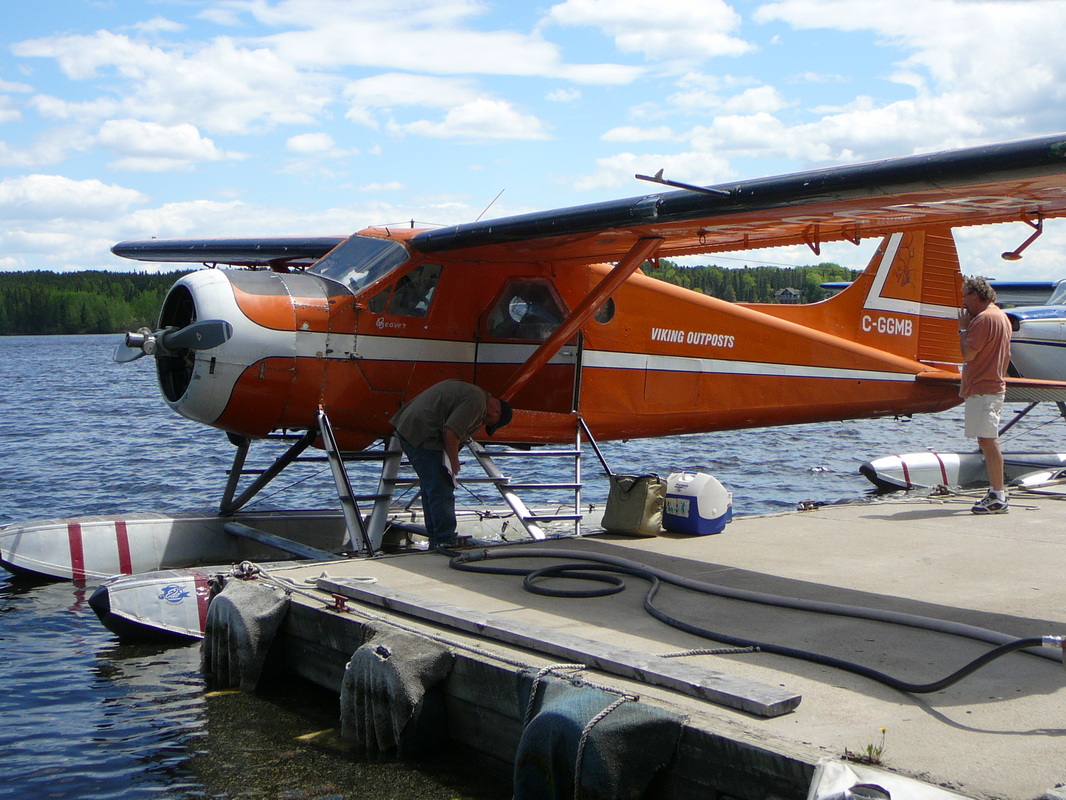
C-GGMB sits on top of EDO 4580 floats and has been updated with the Kenmore seaplane fins in place of the ventral fin. C-GGMB is equipped with a canoe rack on the port – the rack consists of two additional struts, one attached on the top of the front float strut, the other to the top of the rear strut and at the lower end, both are attached to the outer edge of the float. Note ‘Mike-Bravo’ has a paint detail of a caribou on her vertical tail fin
|
A real work horse In the immediate post-war era, de Havilland Canada management turned to the civilian market for continued work, aware that military contracts were unlikely to guarantee business. The company began an extensive program of collecting requests from bush pilots in order to understand what they needed in a new aircraft. Almost without variation, the pilots asked for tremendous extra power and STOL performance in a design that could be easily fitted with wheels, skis, or floats. Poor cruise performance seemed no issue. Other suggestions were seemingly mundane but important in the bush plane world; for instance, full-sized doors were installed on both sides of the aircraft so it could be easily loaded no matter which side of a dock it tied up on. The doors were also made wide enough to allow for a 170 liter (45 gallon) drum to be rolled up into the aircraft. |
|
Video Starting at the pilot’s cockpit, make the following checks: While making exterior inspection, check all surfaces for cracks, distortion, loose rivets and indication of damage. Check all access doors for security. Check surfaces and hinges of all flight control surfaces. Check security of fuel filler caps and access panel. Check that the aircraft has been serviced with required quantities of fuel, oil and hydraulic fluid. Check that floats are drained and not damaged. Check that carburetor and oil cooler intakes are clear. Check propeller for nicks and oil leaks. Check cowl and panels for dents, scratches and for security. Check that head cover is removed. Before starting engine make the following checks: Fire guard – in position. Propeller area – clear. All switches – OFF (except generator field switch). Throttle lever – ¼ to ½ inch open. Propeller lever fully DECREASE RPM. Mixture lever IDLE CUT – OFF. Carburetor hot air lever – COLD. Ask ground crew or use starter to turn propeller to make sure that en excessive amount of oil is not trapped in the lower cylinders, forming a hydraulic lock. Note if a hydraulic lock is indicated; drain the excess oil from the lower cylinders, by removing their spark plugs. Starting the engine: Propeller area – clear. Battery master switch – ON Fuel and oil emergency cut-off lever – OPEN Fuel selector to the fullest tank. Mixture lever – AUTO RICH. Throttle lever – ¼ to ½ inch OPEN. Build up fuel pressure with wobble pump to maximum 5 psi. Prime 4 strokes. Both ignition switches to ON position. Hold starter switch to STARTER position until starter whine ceases ot rise in pitch. Release starter switch and simultaneously: Hold clutch engagement switch to STARTER CLUTCH position. Hold Booster Coil switch to BOOSTER COIL position. As soon as engine fires: Release Starter and Starter Clutch switches to OFF position. Release Boost coil switch. Priming Pump – locked OFF. As soon as engine fires, throttle back to about 500 to 800 rpm. Do not pump throttle to catch a ‘dying’ engine. If oil pressure does not register on gauge within 30 seconds, top engine and investigate. As soon as oil pressure reaches 50 psi. steady indication select propeller lever to full INCREASE RPM position. |
|
|
“Have a nice flight and many happy landings” Starting the engine: Propeller area – clear. Battery master switch – ON Fuel and oil emergency cut-off lever – OPEN Fuel selector to the fullest tank. Mixture lever – AUTO RICH. Throttle lever – ¼ to ½ inch OPEN. Build up fuel pressure with wobble pump to maximum 5 psi. Prime 4 strokes. Both ignition switches to ON position. Hold starter switch to STARTER position until starter whine ceases ot rise in pitch. Release starter switch and simultaneously: Hold clutch engagement switch to STARTER CLUTCH position. Hold Booster Coil switch to BOOSTER COIL position. As soon as engine fires: Release Starter and Starter Clutch switches to OFF position. Release Boost coil switch. Priming Pump – locked OFF. As soon as engine fires, throttle back to about 500 to 800 rpm. Do not pump throttle to catch a ‘dying’ engine. If oil pressure does not register on gauge within 30 seconds, stop engine and investigate. As soon as oil pressure reaches 50 psi. steady indication select propeller lever to full INCREASE RPM position. Engine warm-up: Throttle to give 1000 rpm. Move propeller lever fully forward to INCREASE RPM, as soon as oil pressure reaches 50 psi. After oil temperature has reached 40 degrees Celsius (100 dgr. F), adjust to smoothest engine speed between 1000 to 1400 rpm. Mixture lever FULL RICH. Select propeller lever to coarser pitch at 1000 rpm, to circulate the oil in the constant speed unit and propeller cylinder, then return to INCREASE RPM. Never rush engine warm-up. Check oil pressure, fuel pressure and temperature. Tank feeds – check by rotating fuel selector to each tank. Take-off: Make sure cylinder head temperature is below 230 degrees Celsius (450 dgr. F). Adjust throttle lever friction knob. Line up in the wind direction. Open the throttle smoothly to maximum permissible take-off power. Anticipate tendency of aircraft to swing to the left. Allow aircraft to fly itself of at 55 to 65 mph. in a tail down attitude and climb at 65 mph. As soon as safe height has been attained, reduce power to 33.5 In.Hg. and 2200 rpm if aircraft is fully loaded, or 30 In.Hg. and 2000 rpm for normal weight. Slowly increase air speed to 80 mph and re-trim. At altitude of 500 ft. – flaps to CLIMB and re-trim. Back in the office We returned to the office to see Craig and thank him for making the generous offer of the memorable flight in the Beaver. We bade our host farewell and returned to the dock for some last shots of this idyllic location in the late afternoon sunshine |
|
Red Lake Seaplane Maintenance
|
C-GYYS
C-GYYS, came off the production line in 1958. The Otter faithfully served well known Northwest Flying Inc. from Nestor Falls for several years, until sold to Chimo Air in August 2012. The aircraft is used during the summer months bringing tourists into the Ontario wilderness areas. As of summer 2013, C-GYYS was still painted in the basic brown-crème scheme it had carried during its time with Northwest Flying Inc. In fact it’s the same color scheme as the Northwest Flying DHC-2 Beaver C-GEBL Pratt & Whitney R-1340 The first R-1340 developed 425 hp. The engine remained in production until 1960 with the last variants producing up to 600 hp, which is still the engine in the standard Otter. With almost 35,000 R-1340 build over the years, the engine is the power plant for the Noorduyn Norseman, Harvard, the Fairchild 71C and Super 71 and of course the DHC-3 Otter. The original R-1340 radial engine used in the Otter has been out of production for many years. Parts are becoming scarce and overhauls expensive. The Otter’s airframe though, was designed to last and conversions with turbo powered engines will keep the Otter flying for many more decades. Electrical energy Electrical energy of the Otter is supplied by a direct current 50 amp. 28-30 volt generator in conjunction with a 24 volt 24 amp-hr. storage battery. Installations of generators of 80 to 100 amp. And batteries up to 35 amp-hr. have been made. All circuits of the electrical system are protected by manual reset-type circuit-breakers on the junction box panel behind the co-pilot’s seat or on the electrical switch panel on the co-pilot’s sub-panel. The battery is inside the baggage compartment on a shelf in the rear right-hand corner. The following equipment and controls are supplied by the electrical system; engine starter, booster coil, fuel booster pump, pitot head heater, engine fire ext. system, instrument and warning lights, interior lights, navigation lights, landing lights, heater installation, radio and communication equipment. For starting the engine or for electrical ground checks, an external power source may be connected to an external power receptacle fitted to the right side of the fuselage, aft of the cabin door. Access is gained through a spring-loaded hinge panel. When external power is connected, the aircraft battery is isolated if the battery master switch is in the OFF position. The battery master switch on the starter panel, is of the double-pole, single-throw type and serves also as the generator field switch. A volt-ammeter is on the electrical switch panel. The instrument constantly shows the number amps. being delivered to the system and the battery. When pressing the button on the left side of the instrument, the generator output voltage is indicated. |
|
|
CF-BFI
Above frame belongs to Norseman CF-BFI. This airframe was constructed in June 1944, CF-BFI and entered service with the USAAF that same year. Following the war, ‘Bravo-India’ served several US and Canada based operators. Her fuselage ended up at Red Lake Seaplane Service, Red Lake, Ontario in 1992. In 1993 the fuselage was used for freight loading contest at Norseman Festival. Mr. Bob Parmerter Mr. Bob Parmerter of the Canadian Bush plane Heritage Museum in Sault Ste. Marie, Ontario, beliefs that this Beech 18 hulk is A-629. This Beech wasregistered to the RCAF in 1951. It served with Training Command until 1968. She soon was sold for $ 10.000,- to Ontario Central Airlines of Kenora, Ontario and was registrated CF-XVF. On February 17, 1975 ‘Victor-Foxtrot’ crashed on Red Lake when she took off downwind with 850 lbs. overload and ice on the wings. The aircraft shuddered violently after lift-off and then settled into the snow bank 800 ft beyond the runway but hit a frozen pile of dirt. Sam Cole was an eyewitness and he had the following information about the incident. “I was there the day this plane met its end. Roly Heinl was the skipper, when it took off for Sandy Lake, 144 miles north of Red Lake. It was late one morning in February, I believe. Roly taxied out for a take off toward the east. Light snow was falling and the visibility was about a mile or two. The ambient temperature was slightly below freezing and the snow that settled on the wings melted into water droplets. As Roly started his take off, the water froze... Roly had on a load of sugar, a farm wagon and one passenger in the copilot's seat. The bush pilot credo is to 'never give up' and when the Beech did not become airborne, near the end of the runway, Roly fire-walled the engines, then nailed a 4 foot high snow berm at the end of the field, slammed into the air and tried to keep the thing airborne! About 1.000 feet past the end of the runway was a ditch and the dirt that had been removed from this excavation was heaped and frozen hard, about 3 or 4 feet high. Roly managed to keep the airplane in the air, pulling the nose higher as he went, until he nailed that berm, tearing off the left engine, actually both engines...He bounced another couple of hundred feet, landing on top of the right engine, in a great cloud of snow. The cockpit basically broke off and took on a sort off Concorde look, when it settled on the right engine. Roly dusted himself off and waded back to the field and was picked up by an airport employee who was checking the strip for snow build up. The passenger was brought out by snowmobile and survived as well, although I doubt he continued with his travel plans." The photo’s of the fuselage, which I could not find in Red Lake, are taken by Ruud Leeuw and Mr. Robert W. Arnold. |
|
|
C-FDNZ Chimo Air’s float-equipped Cessna 180J ( registration C-FDNZ) was on May 17, 2007, enroute from Miller Lake, Ontario, to Roderick Lake, Ontario, returning from a series of camp re-supply and maintenance flights. The aircraft was reported as missing at 2130 central daylight time when it did not arrive at Roderick Lake. Search and rescue personnel discovered the wreckage in a wooded area near the shoreline of Miller Lake. The pilot had sustained fatal injuries. The single passenger was trapped in the wreckage and had sustained serious injuries. The aircraft was substantially damaged. |
|

Just a couple of kilometers south Balmertown next to the Chukuni River Bridge, we stopped off at the Lac Seul Airways base where we were greeted by the majestic sight of Otter C-FHXY moored at their dock. Its cowling and engine are blanketed for night condense protection and its water rudders were in the retracted position
Lac Seul Airways
Sportsmans Lodge
|
MacMarmac – Cochenour
Again continuing further on highway 125 and after a few miles you reach the little town of Cochenour. On the north side of this town is a little floatplane base. The ‘storage yard’ is a few streets further down the road in the woods. This storage area is not easy to find and you may some directions from locals. Several years ago WildCountry Airways and Kenora Air Services did operate Otters and Beavers from the kilometer-wide Bruce Channel at the waterfront village of Cochenour. Nowadays the place is deserted. CF-JIN Noorduyn Norseman Chimo Air C-FLBL Aeronca 7AC private No reg. Cessna 180 all metallic |
|
C-FLBL Private owned Aeronca 7BCM C-FLBL was manufactured in 1947. The Aeronca Aircraft Corporation was founded in 1928 in Cincinnati, Ohio. Aeronca became the first company to build a commercially successful general aviation aircraft. When production ended in 1951, Aeronca had sold 17,408 aircraft in 55 models. Aeronca now builds components for aerospace companies including Boeing,Northrop Grumman, Lockheed and Airbus. |
|
CF-JIN Some history on this fascinating Norseman. She was delivered to the RCAF in May 1941. It later appears on civil registry as CF-JIN and flew for several Canadian bush plane operators and a mining company. CF-JIN was registered to Chimo Air Service of Red Lake in December 1995. She featured, together with a Norseman wreck present at Kuby’s maintenance yard, in the movie " The Snow Walker", which was filmed in the Churchill, Manitoba area. Note: “I am still looking for a Flight Manual of the Noorduyn Norseman. Who knows where to download one?” |
|
Red Lake Airport
Continue further along highway 125 in the direction of Cochenour and after a few kilometers the main airport of Red lake comes in sight (you cannot miss it). Immediately visible are the bright yellow air tankers on the south side of the airport. C-GOGO/270 CL415 C-GOGZ/278 CL415 C-GIZV AeroCommander BirdDog CF-LZO Noorduyn Norseman Wrong Lake Airways C-FWWV Beech 18 wreck |
|
|
CF-LZO was assigned to the USAAF during the WO-II. Following the war, the Norseman went into service with the U.S. Forest Service. It returned to Canada as CF-LZO and was reported as having been involved in an accident. The wreck was salvaged in 1953 and restored to flying condition. During the ’90 she was registered to Kenora Air Service and two years later to Caribou Air. ‘Zulu-Oscar’ was registered to Wrong Lake Airways, Winnipeg, Manitoba in April 1996. Present owner Dennis Mockford purchased ‘LZO’ in 2008, having first seen a Norseman in Selkirk in 1964 when he was training as an RCAF Navigator in Winnipeg. “Old love never dies!”.
|
|
The remnants of Beech 18 C-FWWV sports a polished natural metal finish, with a cheat line with blue red tail stripe.
Just a couple of days before we arrived in Red Lake (May 30, 2013), ‘Whiskey-Victor’, which was privately owned by Jim and Brenda Beauchene, impacted the water and sank, shortly after takeoff from the Bruce Channel waterway near Cochenour. C-FWWV was build in 1951 and a former RCAF aircraft. After being sold surplus in 1967 ‘Whiskey-Victor’ was operated with at least five bush plane operator, including well known Nestor Falls Fly-In who operated this Beech 18 till 2011. Sad to see such piece of history in a wrinkled state! - Note the starboard tail-fin is ex C-FWYR, which is presently stored in Kuby’s maintenance yard. |
|

